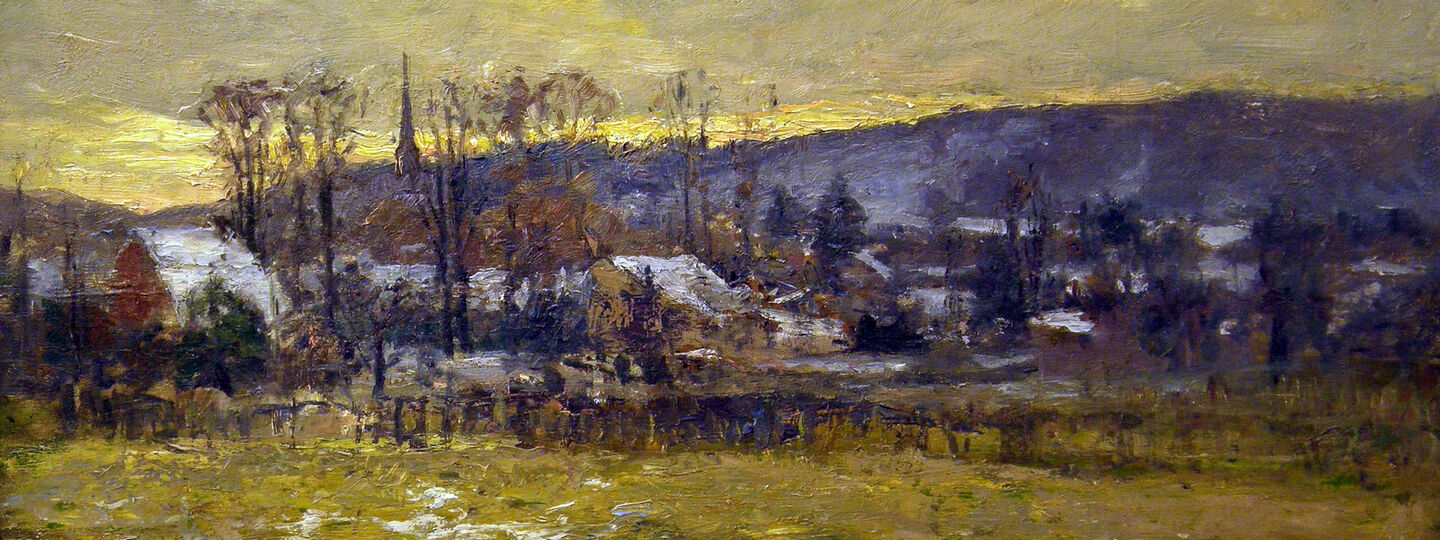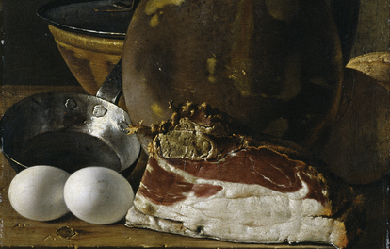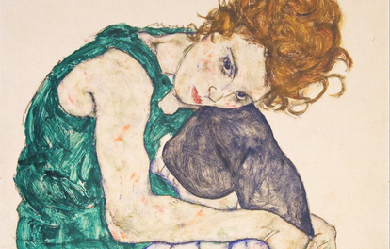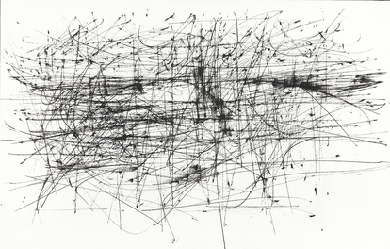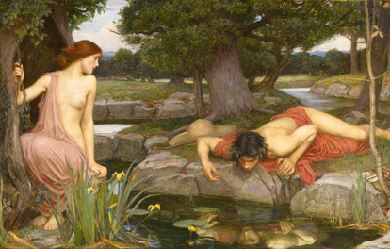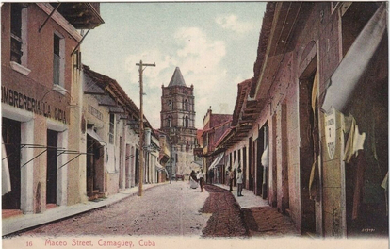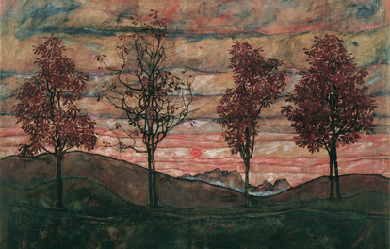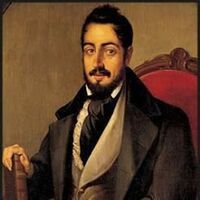
Nicasio Álvarez de Cienfuegos (Madrid, diciembre de 1764 - Orthez, Francia, 30 de junio de 1809), escritor, periodista, poeta y dramaturgo español, de familia asturiana. Estudió en los Reales Estudios de San Isidro, y derecho en las Universidades de Oñate y Salamanca. En esta última conoció a Juan Meléndez Valdés, que lo inició en la poesía, si bien la inspiración de Cienfuegos es más intelectual que sensual. De vuelta en Madrid ejerció de abogado y se hizo amigo de Manuel José Quintana, el gran poeta cívico. A la vez publicó sus versos y tragedias. Trabajó también como periodista y llegó a ser oficial de la Secretaria de Estado, ingresando además en la Real Academia Española y en la Orden de Carlos III. Su actitud ante los invasores franceses durante la Guerra de la Independencia causó que fuera llevado como rehén a Francia, donde murió afectado de tuberculosis. Obra Aunque fue influido por el Neoclasicismo, es considerado como una de las principales figuras de la transición hacia el Romanticismo; poseía además una decidida conciencia social, pues creyó en una fraternidad y hermandad universal de la misma manera que Cicerón y en la función de la caridad dentro del orden social, como muestra su poema En alabanza a un carpintero llamado Alfonso. La defensa de las clases trabajadoras que en esta obra hace ha sido vista como un patente ejemplo de la mentalidad prerromántica. Su lírica posee una vertiente anacreóntica que para más en lo moral que en lo sensual. Intenta renovar la anquilosada adjetivación neoclásica (letargoso olvido, selvosas espesuras, musgoso frescor) y le preocupa el lenguaje y el ritmo en sus poemas, pero no logra deshacerse del impostado lenguaje neoclásico, que resulta retórico y falso. Escribió también para el teatro; cultivó la tragedia en Pitaco, Idomeneo, Zoraida y La Condesa de Castilla, que fue la obra con que se dio a conocer como literato. También escribió comedia, como Las hermanas generosas, de un solo acto Referencias Wikipedia - http://es.wikipedia.org/wiki/Nicasio_Alvarez_de_Cienfuegos
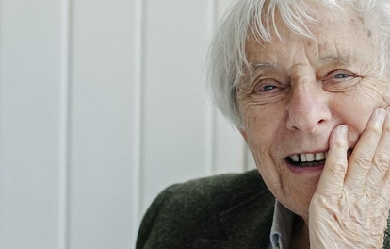
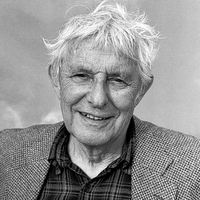
Daniel Abse, CBE FRSL (22 September 1923– 28 September 2014) was a Welsh poet. Early years Abse was born in Cardiff, Wales, to a Jewish family. He was the younger brother of politician and reformer Leo Abse and the eminent psychoanalyst, Wilfred Abse. Unusually for a middle-class Jewish boy, Dannie Abse attended St Illtyd’s College, a working-class Catholic school in Splott. Abse studied medicine, first at the University of Wales College of Medicine, and then at Westminster Hospital Medical School and King’s College London. Abse was a passionate supporter of Cardiff City football club. He first went to watch them play in 1934 and many of his writings refer to his experiences watching and lifelong love of the team known as the “The Bluebirds”. Career as poet Although best known as a poet, Abse worked in the medical field, and was a physician in a chest clinic for over thirty years. He received numerous literary awards and fellowships for his writing. In 1989, he received an honorary doctorate from the University of Wales. His first volume of poetry, After Every Green Thing, was published in 1949. His autobiographic work, Ash on a Young Man’s Sleeve, was published in 1954. He won the Welsh Arts Council Award in both 1971 and 1987, and the Cholmondeley Award in 1985. He was a Fellow of The Royal Society of Literature from 1983. In a foreword to Collected Poems 1948–1976, Abse noted that his poems are increasingly “rooted in actual experience,” both domestic and professional, and many display a reconciliation between Jewish and Welsh themes and traditions. Abse lived for several decades in the north-west area of London, mainly near Hampstead, where he has considerable ties. For several years he wrote a column for the Hampstead and Highgate Express, the local newspaper. These articles were subsequently published in book form. In 2005, his wife Joan Abse was killed in a car accident, while Abse suffered a broken rib. His poetry collection, Running Late, was published in 2006, and The Presence, a memoir of the year after his wife died, was published in 2007; it won the 2008 Wales Book of the Year award. The book was later dramatised for BBC Radio 4. He was awarded the Roland Mathias prize for Running Late. In 2009 Abse brought out a volume of collected poetry. In the same year, he received the Wilfred Owen Poetry Award. Abse was a judge for the inaugural 2010 Hippocrates Prize for Poetry and Medicine. Abse was appointed Commander of the Order of the British Empire (CBE) in the 2012 New Year Honours for services to poetry and literature. Dannie Abse died on 28 September 2014, aged 91. Books * After Every Green Thing Hutchinson, 1948 * Walking Under Water Hutchinson, 1952 * Fire in Heaven Hutchinson, 1956 * Mavericks: An Anthology (editor with Howard Sergeant) Editions Poetry and Poverty, 1957 * Tenants of the House: Poems 1951–1956 Hutchinson, 1957 * Poems, Golders Green Hutchinson, 1962 * Poems! Dannie Abse: A Selection Vista/Dufour, 1963 * Modern European Verse (editor) Vista, 1964 * Medicine on Trial Aldus, 1967 * Three Questor Plays Scorpion, 1967 * A Small Desperation Hutchinson, 1968 * Demo Sceptre, 1969 * Selected Poems Hutchinson, 1970 * Modern Poets in Focus 1 (editor) Corgi, 1971 * Modern Poets in Focus 3 (editor) Corgi, 1971 * Thirteen Poets (editor) Poetry Book Society, 1972 * Funland and Other Poems Hutchinson, 1973 * Modern Poets in Focus 5 (editor) Corgi, 1973 * The Dogs of Pavlov Vallentine, Mitchell, 1973 * A Poet in the Family Hutchinson, 1974 * Penguin Modern Poets 26 (Dannie Abse, D. J. Enright and Michael Longley) Penguin, 1975 * Collected Poems 1948–1976 Hutchinson, 1977 * More Words BBC, 1977 * My Medical School Robson, 1978 * Pythagoras Hutchinson, 1979 * Way Out in the Centre Hutchinson, 1981 * A Strong Dose of Myself Hutchinson, 1983 * One-legged on ice: poems University of Georgia Press, 1983 * Doctors and Patients (editor) Oxford University Press, 1984 * Ask the Bloody Horse Hutchinson, 1986 * Journals From the Ant Heap Hutchinson, 1986 * Voices in the Gallery: Poems and Pictures (editor with Joan Abse) Tate Gallery, 1986 * The Music Lover’s Literary Companion (editor with Joan Abse) Robson, 1988 * The Hutchinson Book of Post-War British Poetry (editor) Hutchinson, 1989 * White Coat, Purple Coat: Collected Poems 1948–1988 Hutchinson, 1989 * People (contributor) National Language Unit of Wales, 1990 * Remembrance of Crimes Past: Poems 1986–1989 Hutchinson, 1990 * The View from Row G: Three Plays Seren, 1990 * Intermittent Journals Seren, 1994 * On the Evening Road Hutchinson, 1994 * Selected Poems Penguin, 1994 * The Gregory Anthology 1991–1993 (editor with A. Stevenson) Sinclair-Stevenson, 1994 * Twentieth-Century Anglo-Welsh Poetry (editor) Seren, 1997 * Welsh Retrospective Seren, 1997 * Arcadia, One Mile Hutchinson, 1998 * Be seated, thou: poems 1989–1998 Sheep Meadow Press, 1999 * Encounters Hearing Eye, 2001 * Goodbye, Twentieth Century: An Autobiography Pimlico, 2001 * New and Collected Poems Hutchinson, 2002 * The Two Roads Taken: A Prose Miscellany Enitharmon Press, 2003 * Yellow Bird Sheep Meadow Press, 2004 * Running Late Hutchinson, 2006 * 100 Great Poems of Love and Lust: Homage to Eros (compiler and editor) Robson, 2007 * The Presence Hutchinson, 2007 * New Selected Poems 1949–2009: Anniversary Collection Hutchinson, 2009 (shortlisted for the Ted Hughes Award for New Work in Poetry) * Speak, Old Parrot Hutchinson, 2013 Fiction * Ash on a Young Man’s Sleeve (Hutchinson, 1954) * Some Corner of an English Field (Hutchinson, 1956) * O Jones, O Jones (Hutchinson, 1970) * There Was A Young Man From Cardiff (Hutchinson, 1991) * The Strange Case of Dr Simmonds & Dr Glas (Robson, 2002) References Wikipedia—https://en.wikipedia.org/wiki/Dannie_Abse


Dear reader Beware! These poems are strong. I poured my heart into these verses. They say I'm weird, I'm dark. Dark as f..., sweet deep inside Strongly in love - still after all this time Bukowski girl // movies // literature // music Médicoblasto en proceso UAM-X 2019/ matemática trunca / filósofa de closet / políglota Autoinmune girl: DLE + FM, lordosis, cervical sprain, scoliosis

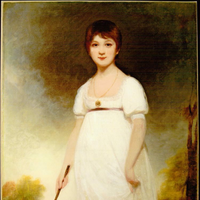
Jane Austen (/ˈdʒeɪn ˈɒstɪn/; 16 December 1775– 18 July 1817) was an English novelist known primarily for her six major novels, which interpret, critique and comment upon the British landed gentry at the end of the 18th century. Austen’s plots often explore the dependence of women on marriage in the pursuit of favourable social standing and economic security. Her works critique the novels of sensibility of the second half of the 18th century and are part of the transition to 19th-century literary realism. With the publications of Sense and Sensibility (1811), Pride and Prejudice (1813), Mansfield Park (1814) and Emma (1815), she achieved success as a published writer. She wrote two additional novels, Northanger Abbey and Persuasion, both published posthumously in 1818, and began a third, eventually titled Sanditon, but died before its completion. Her novels have rarely been out of print, although they were published anonymously and brought her little fame during her lifetime. A significant transition in her posthumous reputation occurred in 1869, fifty-two years after her death, when her nephew’s publication of A Memoir of Jane Austen introduced her to a wider audience. Austen has inspired a large number of critical essays and literary anthologies. Her novels have inspired many films, from 1940's Pride and Prejudice to more recent productions: Sense and Sensibility (1995) and Love & Friendship (2016). Biographical material Very little biographical detail of Austen’s life survives. Of the approximately 3,000 letters Jane wrote in her lifetime only about 160 survive. Her sister Cassandra (to whom most of the letters were addressed) burned “the greater part” of those she kept and censored those she did not destroy, ostensibly to prevent their falling into the hands of relatives and ensuring that “younger nieces did not read any of Jane Austen’s sometimes acid or forthright comments on neighbors or family members”. Other letters were destroyed by the heirs of Admiral Francis Austen, Jane’s brother. Most of the early biographical material about Austen was written by her relatives and reflects the family’s biases in favour of “good quiet Aunt Jane”, that her domestic situation was happy and that her family was the mainstay of her life. With little evidence other than the small amount of biographical materials her brother and nephew produced, which served to set a family legend according to Deirdre Le Faye. Early life Steventon Austen was born at Steventon on 16 December 1775. Her parents, George Austen (1731–1805), and his wife Cassandra (1739–1827), were members of the gentry. George was born into woollen manufacturers. Cassandra was a member of the prominent Leigh family, and daughter to the Master of Balliol, “short, fragile, pretty, and disinclined to marry”. They married on 26 April 1764 at Walcot Church in Bath. For much of Jane’s life, George Austen served as the rector of the Anglican parishes at Steventon, Hampshire, and a nearby village. From 1773 until 1796, he supplemented this income by farming and by teaching three or four boys at a time, who boarded at his home. After a few months at home, her mother placed her with Elizabeth Littlewood who nursed and raised her until she was weaned. She came from a family of six brothers and one sister. Her sister was Austen’s closest friend and confidante throughout her life. The eldest, James, was ten years older; George, a year younger, was born deaf and mute and raised in the village by a local family. During her childhood Jane taught herself enough sign language to communicate with George, suggesting he visited the family home regularly. Charles and Frank served in the navy, both rising to the rank of admiral. Edward was sold to be adopted, to his fourth cousin, Thomas Knight, whose name he took and estate he inherited in 1812. Of her brothers, Austen felt closest to Henry, a banker and, after his bank failed, an Anglican clergyman. Henry acted as his sister’s literary agent, whose large circle of friends and acquaintances in London included bankers, merchants, publishers, painters and actors. He exposed her to a social world not normally visible from a small parish in rural Hampshire. Private theatricals were an essential part of Austen’s education. From her early childhood, the family and friends staged a series of plays in the rectory barn, including Richard Sheridan’s The Rivals (1775) and David Garrick’s Bon Ton. Jane’s eldest brother James wrote the prologues and epilogues and Jane probably joined in these activities, first as a spectator and later as a participant. Most of the plays were comedies, which suggests how Austen’s satirical gifts were cultivated. At age 12, Jane tried her own hand at dramatic writing; she wrote three short plays during her teenage years. In 1783 Jane and Cassandra were sent to Oxford to be educated by Mrs. Ann Cawley, and they moved with her to Southampton later in the year. Both girls caught typhus and Jane nearly died. Austen was from then home educated, until she attended boarding school with her sister from early in 1785. The school curriculum probably included some French, spelling, needlework, dancing and music and, perhaps, drama. The sisters returned home before December 1786; the Austens could not afford to send both the daughters to school. After 1786, Austen “never again lived anywhere beyond the bounds of her immediate family environment”. The remainder of her education came from reading, guided by her father and brothers James and Henry. Austen apparently had unfettered access both to her father’s library and that of a family friend, Warren Hastings. Together these collections amounted to a large and varied library. Her father was also tolerant of Austen’s sometimes risqué experiments in writing, and provided both sisters with expensive paper and other materials for their writing and drawing. According to Park Honan, life in the Austen home was lived in “an open, amused, easy intellectual atmosphere” where the ideas of those with whom the Austens might disagree politically or socially were considered and discussed. Juvenilia (1787–1793) For her own and family’s amusement Austen wrote poems and stories. She later compiled “fair copies” of 29 of these early works into three bound notebooks, now referred to as the Juvenilia, containing work written between 1787 and 1793. There is manuscript evidence that Austen continued to work on these pieces as late as the period 1809–1811, and that her niece and nephew, Anna and James Edward Austen, made further additions as late as 1814. Among these works are a satirical novel in letters titled Love and Freindship [sic], where she mocked popular novels of sensibility, and The History of England, a manuscript of 34 pages accompanied by 13 watercolour miniatures by her sister, Cassandra. Austen’s History parodied popular historical writing, particularly Oliver Goldsmith’s History of England (1764). Austen’s Juvenilia are often, according to scholar Richard Jenkyns, “boisterous” and “anarchic”; he compares them to the work of 18th-century novelist Laurence Sterne and the 20th-century comedy group Monty Python. She sent short pieces of writing to her newborn nieces Fanny Catherine and Jane Anna Elizabeth. Austen was particularly proud of her accomplishments as a seamstress. She also attended church regularly, socialized frequently with friends and neighbours, and read novels—often of her own composition—aloud with her family in the evenings. Socializing with the neighbours often meant dancing, either impromptu in someone’s home after supper or at the balls held regularly at the assembly rooms in the town hall. Her brother Henry later said that “Jane was fond of dancing, and excelled in it”. In 1793 Austen began but abandoned a short play, later titled Sir Charles Grandison or the happy Man, a comedy in 6 acts, which she returned to and completed around 1800. This was a short parody of various school textbook abridgments of Austen’s favourite contemporary novel, The History of Sir Charles Grandison (1753), by Samuel Richardson. Honan speculates that not long after writing Love and Freindship [sic] in 1789, Austen decided to “write for profit, to make stories her central effort”, that is, to become a professional writer. Whenever she made that decision, beginning in about 1793, Austen began to write longer, more sophisticated works. Between 1793 and 1795 Austen wrote Lady Susan, a short epistolary novel, usually described as her most ambitious and sophisticated early work. It is unlike any of Austen’s other works. Austen biographer Claire Tomalin describes the novella’s heroine as a sexual predator who uses her intelligence and charm to manipulate, betray and abuse her lovers, friends and family. Tomalin writes: “Told in letters, it is as neatly plotted as a play, and as cynical in tone as any of the most outrageous of the Restoration dramatists who may have provided some of her inspiration... It stands alone in Austen’s work as a study of an adult woman whose intelligence and force of character are greater than those of anyone she encounters.” Early manuscripts (1796–1798) When Austen was twenty, Tom Lefroy, a neighbour, visited Steventon from December 1795 to January 1796. He had just finished a university degree and was moving to London for training as a barrister. Lefroy and Austen would have been introduced at a ball or other neighbourhood social gathering, and it is clear from Austen’s letters to Cassandra that they spent considerable time together: “I am almost afraid to tell you how my Irish friend and I behaved. Imagine to yourself everything most profligate and shocking in the way of dancing and sitting down together.” The English scholar John Halperin wrote that Austen almost certainly died a virgin, and though she had several chances to marry, all ended in disappointment. Austen wrote in her first surviving letter to her sister Cassandra that Lefroy was “very gentlemanlike, good-looking, pleasant young man”. Austen called him her “friend” and explained that on this account Cassandra must anxious to know more about him. Five days later in another letter, Austen wrote she expected an “offer” from her “friend” and that “I shall refuse him, however, unless he promises to give away his white coat”, going on to write “I will confide myself in the future to Mr. Tom Lefroy, for whom I don’t give a sixpence” and refuse all others. The next day, Austen wrote: “The day will come on which I flirt my last with Tom Lefroy and when you receive this it will be all over. My tears flow as I write at this melancholy idea”. Halperin cautioned that Austen often liked to satirize the sentimental romantic literature that was popular at the time in her letters, and some of the statements about Lefroy may have been ironic. However, it is clear that Austen was genuinely attracted to Lefroy and subsequently none of her other suitors ever quite measured up to him. The Lefroy family intervened and sent him away at the end of January. Marriage was impractical, as both Lefroy and Austen must have known. Neither had any money, and he was dependent on a great-uncle in Ireland to finance his education and establish his legal career. If Tom Lefroy later visited Hampshire, he was carefully kept away from the Austens, and Jane Austen never saw him again. In November 1798, Lefroy was still on Austen’s mind as she wrote to her sister she had tea with one of his relatives, wanted desperately to ask about him, but could not bring herself to raise the subject. After finishing Lady Susan, Austen began her first full-length novel Elinor and Marianne. Her sister remembered that it was read to the family "before 1796" and was told through a series of letters. Without surviving original manuscripts, there is no way to know how much of the original draft survived in the novel published anonymously in 1811 as Sense and Sensibility. Austen began a second novel, First Impressions, in 1796. She completed the initial draft in August 1797, aged 21, (later published as Pride and Prejudice); as with all of her novels, Austen read the work aloud to her family as she was working on it and it became an “established favourite”. At this time, her father made the first attempt to publish one of her novels. In November 1797, George Austen wrote to Thomas Cadell, an established publisher in London, to ask if he would consider publishing First Impressions. Cadell returned Mr. Austen’s letter, marking it “Declined by Return of Post”. Austen may not have known of her father’s efforts. Following the completion of First Impressions, Austen returned to Elinor and Marianne and from November 1797 until mid-1798, revised it heavily; she eliminated the epistolary format in favour of third-person narration and produced something close to Sense and Sensibility. In 1797, Austen met her sister-in-law, Eliza de Feullide, a French aristocrat whose first husband the Comte de Feullide had been guillotined, causing her to flee to Britain, where she married Henry Austen. The description of the execution of the Comte de Feullide related by his widow left Austen with an intense horror of the French Revolution that lasted for the rest of her life. During the middle of 1798, after finishing revisions of Elinor and Marianne, Austen began writing a third novel with the working title Susan—later Northanger Abbey—a satire on the popular Gothic novel. Austen completed her work about a year later. In early 1803, Henry Austen offered Susan to Benjamin Crosby, a London publisher, who paid £10 for the copyright. Crosby promised early publication and went so far as to advertise the book publicly as being “in the press”, but did nothing more. The manuscript remained in Crosby’s hands, unpublished, until Austen repurchased the copyright from him in 1816. Bath and Southampton In December 1800 George Austen unexpectedly announced his decision to retire from the ministry, leave Steventon, and move the family to Bath. While retirement and travel were good for the elder Austens, Jane Austen was shocked to be told she was moving from the only home she had ever known. An indication of her state of mind is her lack of productivity as a writer during the time she lived at Bath. She was able to make some revisions to Susan, and she began and then abandoned a new novel, The Watsons, but there was nothing like the productivity of the years 1795–1799. Tomalin suggests this reflects a deep depression disabling her as a writer, but Honan disagrees, arguing Austen wrote or revised her manuscripts throughout her creative life, except for a few months after her father died. The years from 1801 to 1804 are something of a blank space for Austen scholars as Cassandra destroyed all of her letters from her sister in this period for unknown reasons. In December 1802 Austen received her only known proposal of marriage. She and her sister visited Alethea and Catherine Bigg, old friends who lived near Basingstoke. Their younger brother, Harris Bigg-Wither, had recently finished his education at Oxford and was also at home. Bigg-Wither proposed and Austen accepted. As described by Caroline Austen, Jane’s niece, and Reginald Bigg-Wither, a descendant, Harris was not attractive—he was a large, plain-looking man who spoke little, stuttered when he did speak, was aggressive in conversation, and almost completely tactless. However, Austen had known him since both were young and the marriage offered many practical advantages to Austen and her family. He was the heir to extensive family estates located in the area where the sisters had grown up. With these resources, Austen could provide her parents a comfortable old age, give Cassandra a permanent home and, perhaps, assist her brothers in their careers. By the next morning, Austen realised she had made a mistake and withdrew her acceptance. No contemporary letters or diaries describe how Austen felt about this proposal. In 1814, Austen wrote a letter to her niece, Fanny Knight, who had asked for advice about a serious relationship, telling her that "having written so much on one side of the question, I shall now turn around & entreat you not to commit yourself farther, & not to think of accepting him unless you really do like him. Anything is to be preferred or endured rather than marrying without Affection". The English scholar Douglas Bush wrote that Austen had “had a very high ideal of the love that should unite a husband and wife... All of her heroines... know in proportion to their maturity, the meaning of ardent love”. A possible autobiographical element in Sense and Sensibility occurs when Elinor Dashwood contemplates that “the worse and most irremediable of all evils, a connection for life” with an unsuitable man. In 1804, while living in Bath, Austen started but did not complete her novel, The Watsons. The story centres on an invalid and improvised clergyman and four unmarried daughters. Sutherland describes the novel as “a study in the harsh economic realities of dependent women’s lives”. Honan suggests, and Tomalin agrees, that Austen chose to stop work on the novel after her father died on 21 January 1805 and her personal circumstances resembled those of her characters too closely for her comfort. Her father’s relatively sudden death left Jane, Cassandra, and their mother in a precarious financial situation. Edward, James, Henry, and Francis Austen pledged to make annual contributions to support their mother and sisters. For the next four years, the family’s living arrangements reflected their financial insecurity. They spent part of the time in rented quarters in Bath before leaving the city in June 1805 for a family visit to Steventon & Godmersham. They moved for the autumn months to the newly fashionable seaside resort of Worthing, on the Sussex coast, where they resided at Stanford Cottage. It was here that Austen is thought to have written her fair copy of Lady Susan and added its “Conclusion”. In 1806 the family moved to Southampton, where they shared a house with Frank Austen and his new wife. A large part of this time they spent visiting various branches of the family. On 5 April 1809, about three months before the family’s move to Chawton, Austen wrote an angry letter to Richard Crosby, offering him a new manuscript of Susan if needed to secure the immediate publication of the novel, and requesting the return of the original so she could find another publisher. Crosby replied that he had not agreed to publish the book by any particular time, or at all, and that Austen could repurchase the manuscript for the £10 he had paid her and find another publisher. She did not have the resources to buy the copyright back at that time, but was able to purchase it in 1816. Chawton Around early 1809 Austen’s brother Edward offered his mother and sisters a more settled life—the use of a large cottage in Chawton village that was part of Edward’s nearby estate, Chawton House. Jane, Cassandra and their mother moved into Chawton cottage on 7 July 1809. Life was quieter in Chawton than it had been since the family’s move to Bath in 1800. The Austens did not socialise with gentry and entertained only when family visited. Her niece Anna described the family’s life in Chawton: “It was a very quiet life, according to our ideas, but they were great readers, and besides the housekeeping our aunts occupied themselves in working with the poor and in teaching some girl or boy to read or write.” Published author During her time at Chawton, Jane Austen published four generally well received novels. Through her brother Henry, the publisher Thomas Egerton agreed to publish Sense and Sensibility, which appeared in October 1811. Reviews were favourable and the novel became fashionable among young aristocratic opinion-makers; the edition sold out by mid-1813. Austen’s earnings from Sense and Sensibility provided her with some financial and psychological independence. Egerton then published Pride and Prejudice, a revision of First Impressions, in January 1813. He advertised the book widely and it was an immediate success, garnering three favourable reviews and selling well. By October 1813 Egerton was able to begin selling a second edition. Mansfield Park was published by Egerton in May 1814. While Mansfield Park was ignored by reviewers, it was very popular with readers. All copies were sold within six months, and Austen’s earnings on this novel were larger than for any of her other novels. Austen learned that the Prince Regent admired her novels and kept a set at each of his residences. In November 1815, the Prince Regent’s librarian James Stanier Clarke invited Austen to visit the Prince’s London residence and hinted Austen should dedicate the forthcoming Emma to the Prince. Though Austen disliked the Prince Regent, she could scarcely refuse the request. Austen disapproved of the Prince Regent on the account of his womanizing, gambling, drinking, spendthrift ways and generally disreputable behaviour. She later wrote Plan of a Novel, according to hints from various quarters, a satiric outline of the “perfect novel” based on the librarian’s many suggestions for a future Austen novel. Austen was greatly annoyed by Clarke’s often pompous literacy advice, and the Plan of A Novel parodying Clarke was intended as her revenge for all of the unwanted letters she had received from the royal librarian. In mid-1815 Austen moved her work from Egerton to John Murray, a better known London publisher, who published Emma in December 1815 and a second edition of Mansfield Park in February 1816. Emma sold well but the new edition of Mansfield Park did poorly, and this failure offset most of the income from Emma. These were the last of Austen’s novels to be published during her lifetime. While Murray prepared Emma for publication, Austen began The Elliots, later published as Persuasion. She completed her first draft in July 1816. In addition, shortly after the publication of Emma, Henry Austen repurchased the copyright for Susan from Crosby. Austen was forced to postpone publishing either of these completed novels by family financial troubles. Henry Austen’s bank failed in March 1816, depriving him of all of his assets, leaving him deeply in debt and losing Edward, James, and Frank Austen large sums. Henry and Frank could no longer afford the contributions they had made to support their mother and sisters. Illness and death Austen was feeling unwell by early 1816, but ignored the warning signs. By the middle of that year, her decline was unmistakable, and she began a slow, irregular, deterioration. The majority of biographers rely on Dr. Vincent Cope’s 1964 retrospective diagnosis and list her cause of death as Addison’s disease, although her final illness has also been described as resulting from Hodgkin’s lymphoma. She continued to work in spite of her illness. Dissatisfied with the ending of The Elliots, she rewrote the final two chapters, finished on 6 August 1816. In January 1817 she began The Brothers (titled Sanditon when published in 1925), and completed twelve chapters before stopping work in mid-March 1817, probably due to illness. Austen made light of her condition, describing it as “bile” and rheumatism. As her illness progressed she experienced difficulty walking and lacked energy; by mid-April she was confined to bed. In May Cassandra and Henry brought her to Winchester for treatment. Austen died in Winchester on 18 July 1817, at the age of 41. Henry, through his clerical connections, arranged for his sister to be buried in the north aisle of the nave of Winchester Cathedral. The epitaph composed by her brother James praises Austen’s personal qualities, expresses hope for her salvation, mentions the “extraordinary endowments of her mind”, but does not explicitly mention her achievements as a writer. Posthumous publication After Austen’s death, Cassandra, Henry Austen, and Murray arranged for the publication of Persuasion and Northanger Abbey as a set. Henry Austen contributed a Biographical Note which for the first time identified his sister as the author of the novels. Tomalin describes it as “a loving and polished eulogy”. Sales were good for a year—only 321 copies remained unsold at the end of 1818. In 1832 Richard Bentley purchased the remaining copyrights to all of her novels, and over the following winter published five illustrated volumes as part of his Standard Novels series. In October 1833, Bentley released the first collected edition of her works. Since then, Austen’s novels have been continuously in print. Genre and style Austen’s works critique the sentimental novels of the second half of the 18th century and are part of the transition to 19th-century literary realism. The earliest English novelists, Richardson, Henry Fielding and Tobias Smollett, were followed by the school of sentimentalists and romantics such as Walter Scott, Horace Walpole, Clara Reeve, Ann Radcliffe, Laurence Sterne, and Oliver Goldsmith, whose style and genre Austen rejected, returning the novel on a “slender thread” to the tradition of Richardson and Fielding for a “realistic study of manners”. Walter Scott noted Austen’s “resistance to the trashy sensationalism of much of modern fiction—'the ephemeral productions which supply the regular demand of watering places and circulating libraries’”. Yet her rejection of these genres is complex, as evidenced by Northanger Abbey and Emma. Similar to William Wordsworth, who excoriated the modern frantic novel in the “Preface” to his Lyrical Ballads (1800), Austen distances herself from escapist novels; the discipline and innovation she demonstrates is similar to his, and she shows “that rhetorically less is artistically more.” She eschewed popular Gothic fiction, stories of terror in which a heroine typically was stranded in a remote location, a castle or abbey (32 novels between 1784 and 1818 contain the word “abbey” in their title). Yet in Northanger Abbey she alludes to the trope, with the heroine, Catherine, anticipating a move to a remote locale. Rather than full-scale rejection or parody, Austen transforms the genre, juxtaposing reality, with descriptions of elegant rooms and modern comforts, against the heroine’s “novel-fueled” desires. Nor does she completely denigrate Gothic fiction: instead she transforms settings and situations, such that the heroine is still imprisoned, yet her imprisonment is mundane and real—regulated manners and the strict rules of the ballroom. In Sense and Sensibility Austen presents characters who are more complex than in staple sentimental fiction, according to critic Keymer, who notes that although it is a parody of popular sentimental fiction, “Marianne in her sentimental histrionics responds to the calculating world... with a quite justifiable scream of female distress.” Richardson’s Pamela, the prototype for the sentimental novel, is a didactic love story with a happy ending, written at a time women were beginning to have the right to choose husbands and yet were restricted by social conventions. Austen attempted Richardson’s epistolary style, but found the flexibility of narrative more conducive to her realism, a realism in which each conversation and gesture carries a weight of significance. The narrative style utilises free indirect speech—she was the first English novelist to do so extensively—through which she had the ability to present a character’s thoughts directly to the reader and yet still retain narrative control. The style allows an author to vary discourse between the narrator’s voice and values and those of the characters. Austen had a natural ear for speech and dialogue, according to scholar Mary Lascelles “Few novelists can be more scrupulous than Jane Austen as to the phrasing and thoughts of their characters.” Techniques such as fragmentary speech suggest a character’s traits and their tone; “syntax and phrasing rather than vocabulary” is utilised to indicate social variants. Dialogue reveals a character’s mood—frustration, anger, happiness—each treated differently and often through varying patterns of sentence structures. For example, when Elizabeth Bennett rejects Darcy, her stilted speech and the convoluted sentence structure reveals that he has wounded her: From the very beginning, from the first moment I may almost say, of my acquaintance with you, your manners impressing me with the fullest belief of your arrogance, your conceit, and your selfish disdain of the feelings of others, were such as to form that the groundwork of disapprobation, on which succeeding events have built so immovable a dislike. And I had not known you a month before I felt that you were the last man in the world whom I could ever be prevailed on to marry. Austen’s plots highlight women’s traditional dependence on marriage to secure social standing and economic security. As an art form, the 18th-century novel lacked the seriousness of its equivalents from the 19th century, when novels were treated as “the natural vehicle for discussion and ventilation of what mattered in life”. Rather than delving too deeply into the psyche of her characters, Austen enjoys them and imbues them with humour, according to critic John Bayley. He believes that the well-spring of her wit and irony is her own attitude that comedy “is the saving grace of life”. Part of Austen’s fame rests on the historical and literary significance that she was the first woman to write great comic novels. Samuel Johnson’s influence is evident, in that she follows his advice to write “a representation of life as may excite mirth”. Her humour comes from her modesty and lack of superiority, allowing her most successful characters, such as Elizabeth Bennet, to transcend the trivialities of life, which the more foolish characters are overly absorbed in. Austen used comedy to explore the individualism of women’s lives and gender relations, and she appears to have used it to find the goodness in life, often fusing it with “ethical sensibility”, creating artistic tension. Critic Robert Polhemus writes, “To appreciate the drama and achievement of Austen, we need to realize how deep was her passion for both reverence and ridicule... and her comic imagination reveals both the harmonies and the telling contradictions of her mind and vision as she tries to reconcile her satirical bias with her sense of the good.” Reception Contemporaneous responses As Austen’s works were published anonymously, they brought her little personal renown. They were fashionable among opinion-makers, but were rarely reviewed. Most of the reviews were short and on balance favourable, although superficial and cautious. They most often focused on the moral lessons of the novels. Sir Walter Scott, a leading novelist of the day, contributed one anonymously. Using the review as a platform to defend the then-disreputable genre of the novel, he praised Austen’s realism. The other important early review was attributed to Richard Whately in 1821. However, Whately denied having authored the review, which drew favourable comparisons between Austen and such acknowledged greats as Homer and Shakespeare, and praised the dramatic qualities of her narrative. Scott and Whately set the tone for almost all subsequent 19th-century Austen criticism. 19th century Because Austen’s novels did not to conform to Romantic and Victorian expectations that "powerful emotion [be] authenticated by an egregious display of sound and colour in the writing", 19th-century critics and audiences preferred the works of Charles Dickens and George Eliot. In a rare sympathetic review, in this case of Emma in 1815, Sir Walter Scott wrote that book displayed “the art of copying from nature as she really exists in the common walks of life, and presenting to the reader, instead of the splendid scenes from an imaginary world, a correct and and striking representation of that which is daily taking place around him”. Through Scott was positive, Austen’s work did not match the prevailing aesthetic values of the Romantic zeitgeist. Though Austen’s novels were republished in Britain from the 1830s and sold at a steady rate, they were not bestsellers. Austen had many admiring readers in the 19th century who considered themselves part of a literary elite. Philosopher and literary critic George Henry Lewes expressed this viewpoint in a series of enthusiastic articles published in the 1840s and 1850s. This theme continued later in the century with novelist Henry James, who referred to Austen several times with approval and on one occasion ranked her with Shakespeare, Cervantes, and Henry Fielding as among “the fine painters of life”. The publication of James Edward Austen-Leigh’s A Memoir of Jane Austen in 1869 introduced Austen to a wider public as “dear aunt Jane”, the respectable maiden aunt. Publication of the Memoir spurred the reissue of Austen’s novels—the first popular editions were released in 1883 and fancy illustrated editions and collectors’ sets quickly followed. Author and critic Leslie Stephen described the popular mania that started to develop for Austen in the 1880s as “Austenolatry”. Around the start of the 20th century, members of the literary elite reacted against the popularization of Austen. They referred to themselves as Janeites in order to distinguish themselves from the masses who did not properly understand her works. For example, Henry James responded negatively to what he described as “a beguiled infatuation” with Austen, a rising tide of public interest that exceeded Austen’s “intrinsic merit and interest”. The American literacy critic A. Walton Litz noted that the “anti-Janites” in the 19th and 20th centuries comprise a formidable literacy squad of Mark Twain, Henry James, Charlotte Bronte, D.H. Lawrence and Kingsley Amis, but in “every case the adverse judgement merely reveals the special limitations or eccentricities of the critic, leaving Jane Austen relativity untouched”. Modern Several of Austen’s works have been subject to academic study. The first examination came from a 1911 essay by Oxford Shakespearean scholar A. C. Bradley. In his essay, Bradley groups of Austen’s novels into “early” and “late” works, a distinction still used by scholars today. The second was R. W. Chapman’s 1923 edition of Austen’s collected works. Not only was it the first scholarly edition of Austen’s works, it was also the first scholarly edition of any English novelist. The Chapman text has remained the basis for all subsequent published editions of Austen’s works. With the publication in 1939 of Mary Lascelles’s Jane Austen and Her Art, the academic study of Austen took hold. Lascelles’s innovative work included an analysis of the books Austen read and the effect of her reading on her work, an extended analysis of Austen’s style, and her “narrative art”. Concern arose that academics were taking over Austen criticism and that it was becoming increasingly esoteric, a debate that has continued since. A more revisionist approach in the 1940s, together with F. R. Leavis’s and Ian Watt’s pronouncement that Austen was one of the great writers of English fiction, did much to cement Austen’s reputation amongst academics. They agreed that she "combined [Henry Fielding’s and Samuel Richardson’s] qualities of interiority and irony, realism and satire to form an author superior to both". The period since World War II has seen more scholarship on Austen using a diversity of critical approaches, including feminist theory, and perhaps most controversially, postcolonial theory. The continuing disconnection between the popular appreciation of Austen, particularly by modern Janeites, and the academic appreciation of Austen has widened considerably. A sign of the way that Austen can still spark debate can be seen when the American English professor Gene Koppel mentioned in a lecture that Austen and her family were “Tories of the deepest dye” [the Tories were the conservative party while the Whigs were the liberal party], a statement which greatly upset many of Koppel’s liberal students, who much to his amusement, complained to him how was it possible that Austen was a conservative?. The conservative Koppel noted several feminist authors such as Claudia Johnson and Mollie Sandock were claiming Austen for their own cause. Citing the work of Hans-Georg Gadamer, Koppel argued that different people can and do react to the same work of literature in different ways as art is always a subjective discipline as various people have their standards for evaluating literature.?. A such, Koppel argued that competing interpretations of Austen’s work, provided that they are grounded in readings of her work are all equally valid, and so it equally possible to see Austen as a feminist critiquing Regency society and as a conservative upholding the values of Regency society. Adaptations Austen’s novels have resulted in sequels, prequels and adaptations of almost every type, from soft-core pornography to fantasy. From the 19th century, her family members published conclusions to her incomplete novels, and by 2000 there were over 100 printed adaptations. The first film adaptation was the 1940 MGM production of Pride and Prejudice starring Laurence Olivier and Greer Garson. BBC television dramatisations since the 1970s have attempted to adhere meticulously to Austen’s plots, characterisations and settings. From 1995 a large number of Austen adaptations began to appear, with Ang Lee’s film of Sense and Sensibility, for which screenwriter and star Emma Thompson won an Academy Award, and the BBC’s immensely popular TV mini-series Pride and Prejudice, starring Jennifer Ehle and Colin Firth. A 2005 British production of Pride and Prejudice, directed by Joe Wright and starring Keira Knightley and Matthew Macfadyen, was followed in 2007 by ITV’s Mansfield Park, Northanger Abbey and Persuasion, and in 2016 by Love & Friendship, a film version of Lady Susan that borrowed the title of Austen’s Love and Freindship [sic].

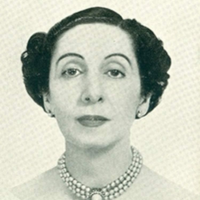
Ana Inés Bonnin Armstrong poeta puertorriqueña nacida en Ponce en 1902, hija de padre español y madre puertorriqueña. Desde muy pequeña fue llevada a Mallorca y posteriormente a Barcelona, donde cultivó intensamente la música y la pintura, pudiendo decirse que llegó a la poesía escalando esos peldaños para constituirseen una feliz cantadora del milagro de la vida y del amor. Cultivó también el teatro y el ensayo, habiendo sido destacada varias veces por el Instituto de Artes Teatrales de Puerto Rico. Entre sus obras merecen destacarse: * Fuga en 1948 * Poema de las tres voces en 1949 * Luz de blanco en 195 * La calle inédito * Compañeros de ruta Obtuvo los premios "Juan Alcover" en 1963 y el "Ciudad de Palma", editado por el ayuntamientode Mallorca. Referencias http://alma-desnuda.espacioblog.com/post/2007/05/20/ana-ines-bonnin-armstrong
Alejandro Aura (Ciudad de México, 2 de marzo de 1944 - Madrid, España, 30 de julio de 2008) fue un ensayista, poeta y dramaturgo mexicano, además de promotor cultural. Hermano y padre de las también actrices Marta Aura y María Aura, respectivamente. Junto con su labor como hombre de letras, destacó su paso por el Instituto de Cultura del Gobierno del Distrito Federal (hoy Secretaría de Cultura), en donde promovió el uso de espacios públicos para celebraciones culturales y fundó un millar de grupos de lectura (los libro-clubs). Como empresario, creó el teatro-bar El hijo del cuervo, ubicado en la zona de Coyoacán, al sur de la capital mexicana.
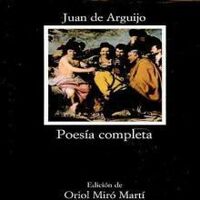
Juan de Arguijo (Sevilla, 1567 - ibíd. 1623), poeta y músico español perteneciente al Siglo de Oro en la corriente estética barroca. Hijo de familia acaudalada y caballero veinticuatro de su ciudad natal, fue nombrado procurador en las Cortes convocadas por Felipe III en 1598. Era además músico y diestro tañedor de vihuela, y se distinguió como mecenas de artistas y escritores. En su tertulia solía leer cuentos, que recogió el poeta sevillano Antonio Ortiz Melgarejo y editó Antonio Paz y Meliá en uno de los volúmenes de Sales españolas o agudezas del ingenio nacional (1902). En estas liberalidades y por su afición a la buena y disipada vida dilapidó bastante su patrimonio familiar y hubo de padecer bastantes estrecheces económicas en su vejez. En sus poemas suele aparecer bajo el sobrenombre poético de Arcicio. Reaccionó contra el culteranismo que sedujo a la mayoría de sus contemporáneos, pertenecientes también a la escuela sevillana, oponiendo a dicha estética el clasicismo y la erudición arqueológica, por lo que su poesía aparece a los criterios actuales demasiado culta y fría, si bien goza de una gran perfección formal y equlibrio, que lucen su virtud en sonetos perfectos como La constancia. En efecto, fue un gran sonetista, sobre todo sobre temas mitológicos, que eran los que prefería, aunque también compuso sonetos de tema moral como el anterior e históricos con el habitual desengaño y melancolía saturniana de los barrocos: A Baco, A Rómulo, A Troya, A Lucrecia, A Casandra, A Julio César, etc. Escribió cartas de gran valor literario y fue amigo y el mecenas sevillano de Lope de Vega, quien le dedicó sus Rimas y le imitó en algunos de los sonetos que contiene este libro de tema mitológico, histórico y grecolatino. De inspiración fundamentalmente clásica, académica y formal, seguidora del arte frente a la espontaneidad, pertenece a ese grupo de melancólicos poetas sevillanos que cantan a las ruinas, como Rodrigo Caro, que fue discípulo suyo. El equilibrio, la perfección formal, la temática clásica y la estética de Arguijo le constituyeron en el siglo XVIII como uno de los modelos de la literatura del Neoclasicismo junto a los escritores renacentistas del siglo XVI. Referencias Wikipedia - http://es.wikipedia.org/wiki/Juan_de_Arguijo

i live in a world i'd much rather not be in, so i write and read as a way to escape. i've been stuck in a never ending hole of misery and suicidal thoughts and all i have been doing the past 5 years is sinking in even further. want to travel the world if not living in London will do. insane. psycho i'm a basketcase. please share your comments and opinions :)
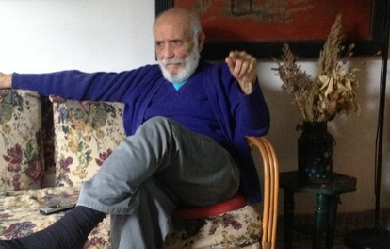
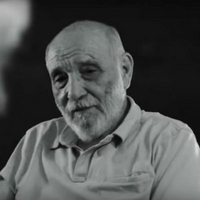
Rafael Alcides Pérez fue un escritor cubano que se dio a conocer tras el triunfo de la revolución cubana. Su obra es fundamentalmente poética, aunque ha incursionado en la narrativa. Síntesis biográfica Nació en Bayamo, en el oriente de Cuba, el 9 de junio de 1933. Cursó la primera enseñanza en su ciudad natal y el bachillerato en el Instituto de Segunda Enseñanza de Holguín y en las Escuelas Pías de La Habana (1946-1949). Realizó estudios de química industrial en la Escuela de Artes y Oficios de La Habana (1950). Viajó a México (1955), Estados Unidos (1956 y 1959), Argentina, Chile, Uruguay y Venezuela (1961). Fue productor, director y escritor de radio; durante varios años dio a conocer a los poetas cubanos a través del programa «En su lugar la poesía». Colaborador de Unión, Casa de las Américas y La Gaceta de Cuba. En 1965 obtuvo mención en el Concurso Casa de las Américas por su novela Contracastro. Sobre su obra poética Este autor ha ejercido el Coloquialismo, al que añade una peculiar manera expresiva entre emotiva y elegíaca. Se ha mantenido fiel a esta línea, incursionando en temas sobre todo autobiográficos. A veces gusta de la poesía ingeniosa, como en "La doble imagen", "La cita del señor" o "La nariz", pero su tono central está en "Agradecido como un perro", en el que lo emotivo, sentimental, trae reminiscencia del neorromanticismo. Alcides tiene un trasfondo afín con la expresión de tragedias familiares o sociales, como testimonian sus poemas "La bayamesa desconocida" y "La liquidación del siglo", respectivamente. Según el escritor cubano Virgilio López Lemus: "Cuando en 1983 publicó Agradecido como un perro, arribaba a los cincuenta años de edad, y se convertía en poeta de referencia para las generaciones nacidas entre 1946 y 1970. Su poema homónimo resulta una obra de arte de la palabra conversacional, propio de la línea emotivo-especulativa o emocional y meditativa que él arropó dentro de la corriente poética comandada por su generación, el coloquialismo. «Agradecido como un perro» es un poema largo e intenso en el que aparece el sujeto lírico en actitud confesional y a la vez testimoniante, donde incluye la vida social y el curso temporal hogareño, el amor y la amistad (¿o son una las dos?), y sobre todo la calidez de un hombre que se expresa con la piel abierta al mundo, aunque reciba heridas o caricias. Caricias, bueno: eso es lo que desea hacer el poema: acariciar, agradecer, loar al mundo circundante, pase de revista personal con implicaciones colectivas, que consiste en una aventura: la de la expresión libre y honda y sincera del ser, sin juegos sensibleros ni concesiones a la amargura que la vida puede dejarnos al paso.” Referencias Ecured.cu—www.ecured.cu/Rafael_Alcides_Pérez
.jpeg)
Been through a lot of things in my life. May be young, but yet old at heart. I have lived life to last me a while, and I am just tired and worn. I go through life and help other people, and than they leave. I am content with who I am and where I am, even when they leave. But at least I know I am still here, and that I did some good.
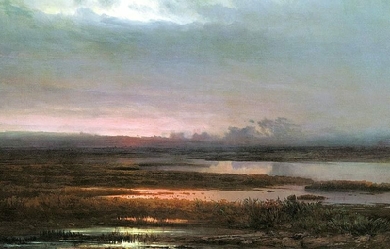
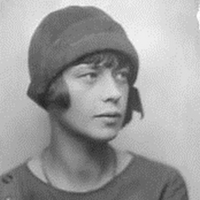
Léonie Fuller Adams (9 December 1899– 27 June 1988) was an American poet. She was appointed the seventh Poet Laureate Consultant in Poetry to the Library of Congress in 1948. Biography Adams was born in Brooklyn, New York, and raised in an unusually strict environment. She was not allowed on the subway until she was eighteen, and even then her father accompanied her. She studied at Barnard College where she was a contemporary and friend of roommate Margaret Mead. While still an undergraduate, she showed remarkable skill as a poet, and at this time her poems began to be published. In 1924, she became the editor of The Measure. Her first volume of poetry, titled Those Not Elect, was in 1925. In the spring of 1928, she had a brief affair with Edmund Wilson. Léonie apologized to Wilson for having “moped and quarreled” on the day she left for France. While in London, Leonie met H.D., who introduced her to several figures in the London literary scene; in Paris she was invited to tea by Gertrude Stein. At the beginning of 1929, when Wilson wrote to her that he was thinking of marrying another woman, Leonie wrote back that she had had a pregnancy and hinted that she had had a miscarriage, mentioning the need for a visit to a London doctor in October. Guilt over the pregnancy—both Wilson, and a former student, Judith Farr, reported that Léonie had a gift for making others feel guilty—combined with his heavy drinking, and indecision in other elements of his personal life led Wilson to a nervous collapse. Louise Bogan later revealed to him that Léonie’s pregnancy had been imaginary, and this caused a temporary rift between Bogan and Adams. In 1929 appeared her volume High Falcon. During the 1930s, she lived in the Ramapo Mountains near Hillburn, New York, and commuted to New York City to lecture on Victorian poetry at New York University. In 1930, she met writer and fellow New York University teacher William Troy. The two married in 1933. That same year she published This Measure. In 1935 she and her husband joined the faculty of Bennington College. She taught English at various other colleges and universities including Douglass College (then known as the New Jersey College for Women), the University of Washington, the Bread Loaf Writers’ Conference, Columbia University, and Sarah Lawrence College. The poets for whom Adams acted as a mentor included Louise Glück. Fantasy writer, poet and editor Lin Carter attended her Poetry Workshop while studying at Columbia University. Marcella Comès Winslow painted a portrait of Adams in 1947. In 1950, she received an honorary doctorate from the New Jersey College for Women. Adams’ Poems: A Selection won the 1954 Bollingen Prize. In a review of the book, Louise Bogan wrote: “Poems such as ”Companions of the Morass," “For Harvest,” “Grapes Making,” and “The Runner with the Lots” spring from and are indications of a poetic endowment as deep as it is rare.” In 1955, in a brief autobiography written for a biographical dictionary of modern literature, Adams threw a little light on her religious and political views: “My father... made me a childhood agnostic—I am now a Roman Catholic.... I am a very liberal democrat.” In 1988, she died at the age of 88 in New Milford, Connecticut. Poetic style Superficially, Léonie Adams’ style did not change greatly over her lifetime, but there was an initial shy wonder at the world that eventually became an intense and almost devotional lyricism. Her rich descriptions demonstrate great delicacy of perception and an exalted spirit. She bears comparison with Henry Vaughan and 17th century metaphysical poetry, especially in her near-religious ecstasy. In a recent critical commentary for the WOM-PO (Discussion of Women’s Poetry) website, poet Annie Finch provides a more postmodern reading of Adams as “a lush, sensual poet who directed her sensuality not towards other people but primarily towards the materials of poetry, towards syntax and symbol, diction and word-sound, in short, towards the language itself,” and goes on to say that “Adams’ poetry teases the balance between the incantatory and representational powers of poetic language. She uses the sounds of language as counterweights to her poems’ ostensible meanings, complicating the act of reading and calling into question a reader’s emotional responses.” Prizes and awards 1954: the Bollingen Prize for Poems: A Selection (1954) 1974: Academy Fellowship from the Academy of American Poets the Shelley Memorial Award fellowship from The Guggenheim Foundation grants from The National Council of the Arts and The National Institute of Arts and Letters, Poetry collections Those Not Elect, Robert M. McBride & Co, 1925; Reprint Services Corp, 1992, ISBN 978-0-7812-6913-1 High Falcon and Other Poems, John Day, New York, 1929. Midsummer, Ward Ritchie, 1929 This Measure, A. A. Knopf, 1933 Poems: A selection, Funk & Wagnalls, 1954 Edited and translated The Lyrics of Francois Villon, Limited Editions Club, New York, 1933. Children’s books “A casque for Amadis,” The Metropolitan Museum of Art, 1928. “The tale of Tenjin: or how a much-abused man became a saint,” The Metropolitan Museum of Art, 1928. Anthologies David Lehman, ed. (2006). “Magnificat in Little; The Horn; The Figurehead; Bell Tower”. The Oxford book of American poetry. Oxford University Press. ISBN 978-0-19-516251-6. David Cecil, Allen Tate, ed. (1958). “Country Summer; Caryatid; Early Waking; These Not Elect; Grapes Making”. Modern Verse in English. Taylor & Francis.

Nacido el 17 de marzo de 1991, en un pequeño pueblo llamado Las Flores, ubicado un kilómetro antes de la desembocadura del río Nechí, en el municipio del mismo nombre, en el departamento de Antioquia-Colombia. De padre aserrador y madre cocinera. Es el primer hijo de su padre y el tercero de su madre. Su niñez transcurre en el pueblo nativo y los pueblo cercanos, con esporádicas salidas de periodos cortos a poblaciones de departamentos cercanos. Su padre fallece cuando tenía siete años, quedando al cuidado de los abuelos paternos durante un tiempo y luego de su madre. Sus primeros años en la escuela son desastrosos, durante cuatro años curso sin aprobar el primer grado, a menudo no volvía después de la Semana Santa. Sólo a los 11 años aprueba el primer grado, ahora con notas excelentes en todas las áreas. A los 21 termina el bachillerato, graduándose con honores, sin embargo no continúa sus estudios. En el 2009 participo en su primer festival de poesía, en Caucasia, en el año siguiente publico sus primeros poemas en el libro de memorias de ese festival, los cuales eran aún bastante planos. Vive en su pueblo natal, con su madre y una hermana.
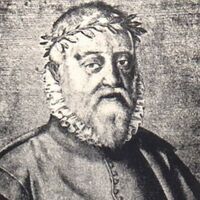
Baltasar del Alcázar (Sevilla, 1530 - Ronda, 1606) fue un poeta español del Siglo de Oro. Fue el sexto hijo de don Luis del Alcázar, jurado del cabildo municipal de Sevilla. Se alistó como soldado en las galeras de don Álvaro de Bazán, primer marqués de Santa Cruz. Durante un tiempo fue prisionero de los franceses, que lo liberaron poco después. Sirvió en la guarnición del castillo de Jaén, época que recogió en diversos poemas. Cuando ya era un autor renombrado, se casó en 1565 y fue nombrado por el duque de Alcalá, don Fernando Enríquez de Ribera, alcaide del castillo y villa de Los Molares. En 1583 vuelve a Sevilla para convertirse en administrador del conde de Gelves. Ya mayor se fue a vivir con una hija suya a Ronda, donde enfermó del mal de piedra y de gota, muriendo en en 1606 sin haber publicado ninguna de sus poesías. Éstas se conservan gracias a las copias de un solo manuscrito, hoy perdido, que confeccionó el pintor Francisco Pacheco, quién también dibujó el único retrato que se conoce de él. Obras La poesía de Baltasar del Alcázar se distingue por su epicureísmo, cantándose en muchas de sus obras los placeres de la vida, y en especial los relativos a la buena mesa. En su mayor parte sus rimas son de tipo festivo, jocoso, epigramático y burlón. Imita, traduce y se inspira en Marco Valerio Marcial y Horacio. Este carácter alegre y desenfadado le valió el aprecio de sus contemporáneos. Pero también cultivó la lírica amorosa y la religiosa, ésta última con especial sensibilidad. Compuso numerosos sonetos, alguno incluso en la variante del soneto del soneto. Es especialmente recordado por ser el autor de Una cena jocosa. Epigramas * A un giboso de delante * A una mujer escuálida * Constanza * Dios nos guarde * Doña Valentina * El estudiante * Hiere la hermosa Elvira... * Entraron en una danza...(El baile) * Job * La capa * La nariz de Clara * Los ojos de Ana * Salir por pies * Preso de amores * Su modo de vivir en la vejez * Una cena jocosa * Yo acuerdo revelaros un secreto Sonetos * A Cristo * Al amor * Cercada está mi alma de contrarios * Di, rapaz mentiroso Otros * Diálogo entre dos perrillos * Diálogo entre un galán y el eco * Consejos a una viuda Referencias Wikipedia - http://es.wikipedia.org/wiki/Baltasar_del_Alcázar
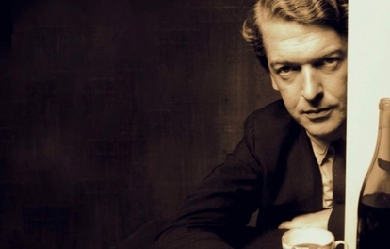
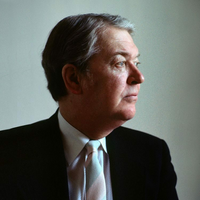
Sir Kingsley William Amis, CBE (16 April 1922– 22 October 1995) was an English novelist, poet, critic, and teacher. He wrote more than 20 novels, six volumes of poetry, a memoir, various short stories, radio and television scripts, along with works of social and literary criticism. According to his biographer, Zachary Leader, Amis was “the finest English comic novelist of the second half of the twentieth century.” He is the father of British novelist Martin Amis. In 2008, The Times ranked Kingsley Amis thirteenth on their list of the 50 greatest British writers since 1945. Life and career Kingsley Amis was born in Clapham, south London, the son of William Robert Amis, a mustard manufacturer’s clerk in the City of London and his wife, Rosa Annie (née Lucas). He was raised in Norbury– in his later estimation "not really a place, it’s an expression on a map [-] really I should say I came from Norbury station". He was educated at the City of London School on a scholarship, after his first year, and in April 1941 was admitted to St. John’s College, Oxford, also on a scholarship, where he read English. It was there that he met Philip Larkin, with whom he formed the most important friendship of his life. While at Oxford, in June 1941, Amis joined the Communist Party of Great Britain (but later broke with communism in 1956, after Soviet leader Nikita Khrushchev denounced former Soviet premier Joseph Stalin in his speech On the Cult of Personality and Its Consequences). After only a year, in July 1942, he was called up for national service. After serving in the Royal Corps of Signals in the Second World War, Amis returned to Oxford in October 1945 to complete his degree. Although he worked hard and earned in 1947 a first in English, he had by then decided to give much of his time to writing. In 1946 he met Hilary Bardwell; they married in 1948 after she became pregnant with their first child, Philip. Amis initially arranged for her to have a back-street abortion, but changed his mind, fearing for her safety. He became a lecturer in English at the University of Wales, Swansea (1949–1961). Two other children followed: Martin in August 1949 and Sally in January 1954. Days after Sally’s birth, Amis’s first novel Lucky Jim was published to great acclaim; critics saw it as having caught the flavour of Britain in the 1950s, ushering in a new style of fiction. By 1972, in addition to impressive sales in Britain, one and a quarter million paperback copies had been sold in the United States, and it was eventually translated into twenty languages, including Polish, Hebrew, Korean, and Serbo-Croat. The novel won the Somerset Maugham Award for fiction and Amis was associated with the writers labelled the Angry Young Men. Lucky Jim was one of the first British campus novels, setting a precedent for later generations of writers such as Malcolm Bradbury, David Lodge, Tom Sharpe and Howard Jacobson. As a poet, Amis was associated with The Movement. During 1958–1959 he made the first of two visits to the United States, where he was Visiting Fellow in Creative Writing at Princeton University and a visiting lecturer in other northeastern universities. On returning to Britain, he fell into a rut, and he began looking for another post; after thirteen years at Swansea, Amis became a fellow of Peterhouse, Cambridge (1961–1963). He regretted the move within a year, finding Cambridge an academic and social disappointment and resigned in 1963, intent on moving to Majorca; he went no farther than London. In 1963, Hilary discovered Amis’s love affair with novelist Elizabeth Jane Howard. Hilary and Amis separated in August, and he went to live with Howard. He divorced Hilary in 1965 and married Howard the same year. In 1968 he moved with Howard to Lemmons, a house in Barnet, north London. She and Amis divorced in 1983. In his last years, Amis shared a house with his first wife Hilary and her third husband, Alastair Boyd, 7th Baron Kilmarnock. Martin wrote the memoir Experience about the life, charm, and decline of his father. Amis was knighted in 1990. In August 1995 he fell, suffering a suspected stroke. After apparently recovering, he worsened, was re-admitted to hospital, and died on 22 October 1995 at St Pancras Hospital, London. He was cremated; his ashes are at Golders Green Crematorium. Literary work Amis is chiefly known as a comedic novelist of mid– to late-20th-century British life, but his literary work extended into many genres—poetry, essays and criticism, short stories, food and drink writing, anthologies, and a number of novels in genres such as science fiction and mystery. His career initially developed in a pattern which was the inverse of that followed by his close friend Philip Larkin. Before becoming known as a poet, Larkin had published two novels; Amis, on the other hand, originally wished to be a poet, and turned to writing novels only after publishing several volumes of verse. He continued throughout his career to write poetry which is known for its typically straightforward and accessible style, yet which often masks a nuance of thought, for example, in “Bookshop Idyll” or “Against Romanticism”, just as it does in his novels. Amis’s first novel, Lucky Jim (1954), is perhaps his most famous, satirizing the high-brow academic set of an unnamed university, seen through the eyes of its protagonist, Jim Dixon, as he tries to make his way as a young lecturer of history. The novel was perceived by many as part of the Angry Young Men movement of the 1950s which reacted against the stultification of conventional British life, though Amis never encouraged this interpretation. Amis’s other novels of the 1950s and early 1960s similarly depict situations from contemporary British life, often drawn from Amis’s own experiences. That Uncertain Feeling (1955) centres on a young provincial librarian (again perhaps with reference to Larkin, librarian at Hull) and his temptation towards adultery; I Like It Here (1958) presents Amis’s contemptuous view of “abroad” and followed upon his own travels on the Continent with a young family; Take a Girl Like You (1960) steps away from the immediately autobiographical, but remains grounded in the concerns of sex and love in ordinary modern life, tracing the courtship and ultimate seduction of the heroine Jenny Bunn by a young schoolmaster, Patrick Standish. With The Anti-Death League (1966), Amis begins to show some of the experimentation– with content, if not with style– which would mark much of his work in the 1960s and 70s. Amis’s departure from the strict realism of his early comedic novels is not so abrupt as might first appear. He had avidly read science fiction since a boy, and had developed that interest into the Christian Gauss Lectures of 1958, while visiting Princeton University. The lectures were published in that year as New Maps of Hell: A Survey of Science Fiction, a serious but light-handed treatment of what the genre had to say about man and society. Amis was particularly enthusiastic about the dystopian works of Frederik Pohl and C. M. Kornbluth, and in New Maps of Hell coined the term “comic inferno” to describe a type of humorous dystopia, particularly as exemplified in the works of Robert Sheckley. Amis further displayed his devotion to the genre in editing, with the Sovietologist Robert Conquest, the science fiction anthology series Spectrum I–V, which drew heavily upon 1950s numbers of the magazine Astounding Science Fiction. Though not explicitly science fiction, The Anti-Death League takes liberties with reality not found in Amis’s earlier novels, and introduces a speculative bent into his fiction, one which would continue to develop in other of his genre novels, such as The Green Man (1969) (mystery/horror) and The Alteration (1976) (alternative history). Much of this speculation was about the improbable existence of any benevolent deity involved in human affairs. In The Anti-Death League, The Green Man, The Alteration and elsewhere, including poems such as “The Huge Artifice: an interim assessment” and “New Approach Needed”, Amis showed frustration with a God who could lace the world with such cruelty and injustice, and championed the preservation of ordinary human happiness– in family, in friendships, in physical pleasure– against the demands of any cosmological scheme. The matter of Amis’s religious views is perhaps ultimately summed up in his response, reported in his Memoirs, to the Russian poet Yevgeny Yevtushenko’s question, in his broken English: “You atheist?” Amis replied, “It’s more that I hate Him.” During this time, Amis had not turned completely away from the comedic realism of Lucky Jim and Take a Girl Like You. I Want It Now (1968) and Girl, 20 (1971) both depict the “swinging” atmosphere of London in the late '60s, in which Amis certainly participated, though neither book is strictly autobiographical. Girl, 20, for instance, is framed in the world of classical (and pop) music, of which Amis was not a part—the book’s relatively impressive command of musical terminology and opinion shows both Amis’s amateur devotion to music and the almost journalistic capacity of his intelligence to take hold of a subject which interested him. That intelligence is similarly on display in, for instance, the presentation of ecclesiastical matters in The Alteration, when Amis was neither a Roman Catholic nor, for that matter, a devotee of any Church. Throughout the 1950s, '60s, and '70s, Amis was regularly producing essays and criticism, principally for journalistic publication. Some of these pieces were collected in 1968's What Became of Jane Austen? and Other Essays, in which Amis’s wit and literary and social opinions were on display ranging over books such as Colin Wilson’s The Outsider (panned), Iris Murdoch’s debut novel Under the Net (praised), or William Empson’s Milton’s God (inclined to agree with). Amis’s opinions on books and people tended to appear (and often, be) conservative, and yet, as the title essay of the collection shows, he was not merely reverent of “the classics” and of traditional morals, but was more disposed to exercise his own rather independent judgment in all things. Amis became associated with Ian Fleming’s James Bond novels, which he greatly admired, in the late 1960s, when he began composing critical works connected with the fictional spy, either under a pseudonym or uncredited. In 1965, he wrote the popular The James Bond Dossier under his own name. That same year, he wrote The Book of Bond, or, Every Man His Own 007, a tongue-in-cheek how-to manual about being a sophisticated spy, under the pseudonym “Lt Col. William ('Bill’) Tanner”, Tanner being M’s Chief of Staff in many of Fleming’s Bond novels. In 1968 Amis wrote Colonel Sun, which was published under the pseudonym “Robert Markham”. Amis’s literary style and tone changed significantly after 1970, with the possible exception of The Old Devils, a Booker Prize winner. Several critics accused him of being old fashioned and misogynistic. His Stanley and the Women, an exploration of social sanity, could be said to instance these traits. Others said that his output lacked the humanity, wit, and compassion of earlier efforts. This period also saw Amis the anthologist, a role in which his wide knowledge of all kinds of English poetry was on display. The New Oxford Book of Light Verse (1978), which he edited, was a revision of the original volume done by W. H. Auden. Amis took the anthology in a markedly new direction: Auden had interpreted light verse to include “low” verse of working-class or lower-class origin, regardless of subject matter, while Amis defined light verse as essentially light in tone, though not necessarily simple in composition. The Amis Anthology (1988), a personal selection of his favourite poems, grew out of his work for a London newspaper, in which he selected a poem daily and presented it with a brief introduction. Amis was shortlisted for the Booker Prize three times in his writing career for Ending Up (1974), Jake’s Thing (1978), and finally winning the prize for The Old Devils in 1986. In 2008, The Times ranked Kingsley Amis thirteenth on their list of the 50 greatest British writers since 1945. Personal life and political views As a young man at Oxford, Amis briefly joined the Communist Party. He left in 1956. He later described this stage of his political life as “the callow Marxist phase that seemed almost compulsory in Oxford”. Amis remained nominally on the Left for some time after the war, declaring in the 1950s that he would always vote for the Labour Party. But he eventually moved further right, a development he discussed in the essay “Why Lucky Jim Turned Right” (1967); his conservatism and anti-communism can be seen in such later works of his as the dystopian novel Russian Hide and Seek (1980). In 1967, Amis, Robert Conquest, John Braine and several other right-wing authors signed a controversial letter to The Times entitled “Backing for U.S. Policies in Vietnam”, supporting the US government in the Vietnam War. He spoke at the Adam Smith Institute, arguing against government subsidy to the arts. Amis was by his own admission and as revealed by his biographers a serial adulterer for much of his life. This was one of the main contributory factors in the breakdown of his first marriage. A famous photograph of a sleeping Amis on a Yugoslav beach shows the slogan (written by wife Hilly) on his back "1 Fat Englishman– I fuck anything". In one of his memoirs, Amis wrote: “Now and then I become conscious of having the reputation of being one of the great drinkers, if not one of the great drunks, of our time”. He suggests that this is the result of a naïve tendency on the part of his readers to apply the behaviour of his characters to himself. This was disingenuous; the fact was that he enjoyed drink, and spent a good deal of his time in pubs. Hilary Rubinstein, who accepted Lucky Jim for publication at Victor Gollancz, commented: “I doubted whether Jim Dixon would have gone to the pub and drunk ten pints of beer... I didn’t know Kingsley very well, you see.” Clive James comments: “All on his own, he had the weekly drinks bill of a whole table at the Garrick Club even before he was elected. After he was, he would get so tight there that he could barely make it to the taxi.” Amis was, however, adamant in his belief that inspiration did not come from a bottle: “Whatever part drink may play in the writer’s life, it must play none in his or her work.” That this was certainly the case is attested to by Amis’s highly disciplined approach to writing. For 'many years’, Amis imposed a rigorous daily schedule upon himself in which writing and drinking were strictly segregated. Mornings were devoted to writing with a minimum daily output of 500 words. The drinking would only begin around lunchtime when this output had been achieved. Amis’s prodigious output would not have been possible without this kind of self-discipline. Nevertheless, according to Clive James, Amis reached a turning point when his drinking ceased to be social, and became a way of dulling his remorse and regret at his behaviour toward Hilly. “Amis had turned against himself deliberately... it seems fair to guess that the troubled grandee came to disapprove of his own conduct.” His friend Christopher Hitchens said: “The booze got to him in the end, and robbed him of his wit and charm as well as of his health.” Amis had a somewhat complex relationship with anti-Semitism, which he sometimes expressed but also disliked and opposed. He occasionally speculated on the historically received, and commonly accepted, stereotypes attributed to Jewish character. Anti-semitism was sometimes present in his conversations and letters written to friends and associates: “The great Jewish vice is glibness, fluency... also possibly just bullshit, as in Marx, Freud, Marcuse.” Or, “Chaplin is a horse’s arse. He’s a Jeeeew you see, like the Marx Brothers, like Danny Kaye.” It is a minor theme in his novel about a paranoid schizophrenic, Stanley and the Women. As for the cultural complexion of America, Amis had this to say: “I’ve finally worked out why I don’t like Americans... Because everyone there is either a Jew or a hick.” Amis himself described his anti-Semitism as being “Very mild ...” Family Amis’s first marriage, of fifteen years, was to Hilary Bardwell, daughter of a civil servant, by whom he had two sons and one daughter: Philip Amis, a graphics designer; Martin Amis, a novelist; and Sally Amis, who died in 2000. Amis was married a second time, to the novelist Elizabeth Jane Howard from 1965 to 1983, with whom he had no children. At the end of his second marriage, he went to live with his ex-wife Hilary and her third husband, in a deal brokered by their two sons Philip and Martin, so that he could be cared for until his death. Partial bibliography Poetry * 1947 Bright November * 1953 A Frame of Mind * 1954 Poems: Fantasy Portraits * 1956 A Case of Samples: Poems 1946–1956 * 1962 The Evans County * 1968 A Look Round the Estate: Poems, 1957–1967 * 1979 Collected Poems 1944–78 Fiction Novels * c.1948 The Legacy (unpublished) * 1954 Lucky Jim * 1955 That Uncertain Feeling * 1958 I Like It Here * 1960 Take a Girl Like You * 1963 One Fat Englishman * 1965 The Egyptologists (with Robert Conquest) * 1966 The Anti-Death League * 1968 Colonel Sun: a James Bond Adventure (pseud. Robert Markham) * 1968 I Want It Now * 1969 The Green Man * 1971 Girl, 20 * 1973 The Riverside Villas Murder * 1974 Ending Up * 1975 The Crime of the Century * 1976 The Alteration * 1978 Jake’s Thing * 1980 Russian Hide-and-Seek * 1984 Stanley and the Women * 1986 The Old Devils * 1988 Difficulties with Girls * 1990 The Folks That Live on the Hill * 1991 We Are All Guilty * 1992 The Russian Girl * 1994 You Can’t Do Both * 1995 The Biographer’s Moustache * c.1995 Black and White (unfinished) Short fiction collections * 1962 My Enemy’s Enemy * 1980 Collected Short Stories * 1991 Mr Barrett’s Secret and Other Stories Other short fiction 1960 “Hemingway in Space” (short story), Punch December 1960 Non-fiction * 1957 Socialism and the Intellectuals, a Fabian Society pamphlet * 1960 New Maps of Hell: A Survey of Science Fiction * 1965 The James Bond Dossier * 1965 The Book of Bond, or Every Man His Own 007 (pseud. Lt.-Col William ('Bill’) Tanner) * 1970 What Became of Jane Austen?, and Other Questions * 1972 On Drink * 1974 Rudyard Kipling and His World * 1983 Everyday Drinking * 1984 How’s Your Glass? * 1990 The Amis Collection * 1991 Memoirs * 1997 The King’s English: A Guide to Modern Usage (name in part a pun as he was sometimes called “Kingers” or “The King” by friends and family, as told by his son Martin in his memoir Experience) * 2001 The Letters of Kingsley Amis, Edited by Zachary Leader * 2008 Everyday Drinking: The Distilled Kingsley Amis, Introduction by Christopher Hitchens (an omnibus edition of On Drink, Everyday Drinking and How’s Your Glass?) Editor * 1967 Spectrum V: a fifth science fiction anthology (ed. with Robert Conquest) * 1978 The New Oxford Book of Light Verse (ed.) Poets in The Amis Anthology: A Personal Choice of English Verse (1988) Richard Aldington– Kenneth Allott– Matthew Arnold– Kenneth Ashley– W. H. Auden– William Barnes– Oliver Bayley– Hilaire Belloc– John Betjeman– Laurence Binyon– William Blake– Edmund Blunden– Rupert Brooke– Robert Browning– Robert Burns– Thomas Campbell– Thomas Campion– G. K. Chesterton– Hartley Coleridge– Robert Conquest– W. J. Cory– John Davidson– Donald Davie– C. Day Lewis– Walter de la Mare– Ernest Dowson– Michael Drayton– Lawrence Durrell– Jean Elliot– George Farewell– James Elroy Flecker– Thomas Ford– Roy Fuller– Robert Graves– Thomas Gray– Fulke Greville– Heath– Reginald Heber– Felicia Dorothea Hemans– W. E. Henley– George Herbert– Ralph Hodgson– Thomas Hood– Teresa Hooley– Gerard Manley Hopkins– A. E. Housman– Henry Howard, Earl of Surrey– T. E. Hulme– Leigh Hunt– Elizabeth Jennings– Samuel Johnson– John Keats– Henry King– Charles Kingsley– Rudyard Kipling– Philip Larkin– Henry Wadsworth Longfellow– John Lydgate– H. F. Lyte– Louis MacNeice– Andrew Marvell– John Masefield– Alice Meynell– Harold Monro– William Morris– Edwin Muir– Henry Newbolt– Alfred Noyes– Wilfred Owen– Thomas Love Peacock– George Peele– Alexander Pope– Frederic Prokosch– Walter Ralegh– John Crowe Ransom– Christina Rossetti– Siegfried Sassoon– John Skelton– Robert Southey– Edmund Spenser– Sir John Squire– Robert Louis Stevenson– John Suckling– Algernon Charles Swinburne– George Szirtes– Alfred, Lord Tennyson– Dylan Thomas– Edward Thomas– R. S. Thomas– Francis Thompson– Anthony Thwaite– Chidiock Tichborne– Aurelian Townsend– W. J. Turner– Oscar Wilde– John Wilmot, Lord Rochester– Roger Woddis– Charles Wolfe– William Wordsworth– William Butler Yeats– Andrew Young References Wikipedia—https://en.wikipedia.org/wiki/Kingsley_Amis
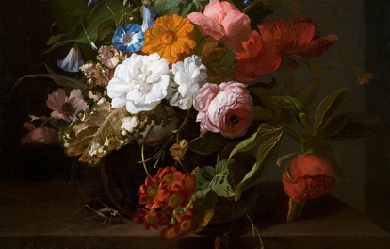
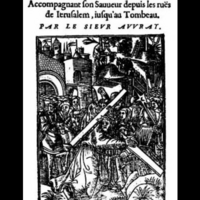
Jean Auvray, né vers 1580, probablement en Normandie et mort avant 1624, est un poète français. Jean Auvray a été chirurgien à Rouen, et ne saurait être confondu avec son homonyme dramaturge contemporain, avocat à Paris. Il appartient à la tradition de la satire normande dans la lignée de Vauquelin, Du Lorens, Angot de l’Éperonnière et Courval-Sonnet. Il est l’auteur d’écrits religieux et de satires. Alternant entre piété, cynisme et obscénité, sa poésie est cependant, selon certains critiques, la meilleure dans sa veine satirique. Il a aussi écrit une tragicomédie : l’Innocence descouverte (peut-être en 1609, dont on peut consulter le texte dans les seconde et troisième édition du Banquet des Muses). Tombeau du rud' en souppe Cy gist dans ce tombeau foireux Rud’ En-Souppe le valeureux, Qui voyant la guerre entreprise Au pays, et qu’on le cherchoit, Se cacha dessous la chemise De sa grand’ Jeanne qui pettoit : Luy qui trembloit tant escoutoit Tant redoubler de petarades, Saisi de peur creust qu’il estoit Au milieu des harquebusades : Qu’en advint-il ? Ses sens malades, Et le trou de son cul puant Perdant sa vertu retentrice, En lieu de combattre en la lice Il mourut de peur en chiant. Le Banquet des muses Œuvres * Le banquet des muses ou Les divers satires du sieur Auvray contenant plusieurs poëmes non encore veuës ny imprimez & L’innocence descouverte, tragi-comédie Rouen : D. Ferrand, 1623. * « La pourmenade de l’âme dévote accompagnant son Sauveur depuis les ruës de Jérusalem jusques au tombeau » [archive], Rouen : David Ferrand, 1633 (3e édition; N.B. : la première édition date de 1622) * « Les œuvres sainctes du sr Auvray : desquelles la plus grande partie n’ont encor esté veuës ny imprimées » [archive], Rouen : David Ferrand, 1634 (3e édition; N.B. : la première édition date de 1626) * L’Innocence découverte, Rouen, Petit, 1609. * Le Triomphe de la Croix, Rouen, D. Ferrand, 1622. Les références Wikipedia – https://fr.wikipedia.org/wiki/
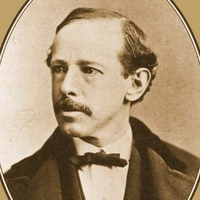
Horatio Alger Jr. (January 13, 1832 – July 18, 1899) was an American writer, best known for his many young adult novels about impoverished boys and their rise from humble backgrounds to lives of middle-class security and comfort through hard work, determination, courage, and honesty. His writings were characterized by the “rags-to-riches” narrative, which had a formative effect on the United States during the Gilded Age. All of Alger’s juvenile novels share essentially the same theme, known as the “Horatio Alger myth”: a teenage boy works hard to escape poverty. Often it is not hard work that rescues the boy from his fate but rather some extraordinary act of bravery or honesty. The boy might return a large sum of lost money or rescue someone from an overturned carriage. This brings the boy—and his plight—to the attention of a wealthy individual. Alger secured his literary niche in 1868 with the publication of his fourth book, Ragged Dick, the story of a poor bootblack’s rise to middle-class respectability. This novel was a huge success. His many books that followed were essentially variations on Ragged Dick and featured casts of stock characters: the valiant hard-working, honest youth, the noble mysterious stranger, the snobbish youth, and the evil, greedy squire. In the 1870s, Alger’s fiction was growing stale. His publisher suggested he tour the American West for fresh material to incorporate into his fiction. Alger took a trip to California, but the trip had little effect on his writing: he remained mired in the tired theme of “poor boy makes good.” The backdrops of these novels, however, became the American West rather than the urban environments of the northeastern United States. In the last decades of the 19th century, Alger’s moral tone coarsened with the change in boys’ tastes. Sensational thrills were wanted by the public. The Protestant work ethic had loosened its grip on the United States, and violence, murder, and other sensational themes entered Alger’s works. Public librarians questioned whether his books should be made available to the young. They were briefly successful, but interest in Alger’s novels was renewed in the first decades of the 20th century, and they sold in the thousands. By the time he died in 1899, Alger had published around a hundred volumes. He is buried in Natick, Massachusetts. Since 1947, the Horatio Alger Association of Distinguished Americans has awarded scholarships and prizes to deserving individuals. Biography Childhood: 1832–1847 Alger was born on January 13, 1832, in the New England coastal town of Chelsea, Massachusetts, the son of Horatio Alger Sr., a Unitarian minister, and Olive Augusta Fenno.He had many connections with the New England Puritan aristocracy of the early 19th century: He was the descendant of Pilgrim Fathers Robert Cushman, Thomas Cushman, and William Bassett. He was also the descendant of Sylvanus Lazell, a Minuteman and brigadier general in the War of 1812, and Edmund Lazell, a member of the Constitutional Convention in 1788.Horatio’s siblings Olive Augusta and James were born in 1833 and 1836, respectively. An invalid sister, Annie, was born in 1840, and a brother, Francis, in 1842. Alger was a precocious boy afflicted with myopia and asthma, but Alger Sr. decided early that his eldest son would one day enter the ministry, and, to that end, he tutored the boy in classical studies and allowed him to observe the responsibilities of ministering to parishioners.Alger began attending Chelsea Grammar School in 1842, but by December 1844 his father’s financial troubles had worsened considerably and, in search of a better salary, he moved the family to Marlborough, Massachusetts, an agricultural town 25 miles west of Boston, where he was installed as pastor of the Second Congregational Society in January 1845 with a salary sufficient to meet his needs. Horatio attended Gates Academy, a local preparatory school, and completed his studies at age 15. He published his earliest literary works in local newspapers. Harvard and early works: 1848–1864 In July 1848, Alger passed the Harvard entrance examinations and was admitted to the class of 1852. The 14-member, full-time Harvard faculty included Louis Agassiz and Asa Gray (sciences), Cornelius Conway Felton (classics), James Walker (religion and philosophy), and Henry Wadsworth Longfellow (belles-lettres). Edward Everett served as president. Alger’s classmate Joseph Hodges Choate described Harvard at this time as “provincial and local because its scope and outlook hardly extended beyond the boundaries of New England; besides which it was very denominational, being held exclusively in the hands of Unitarians”. Alger thrived in the highly disciplined and regimented Harvard environment, winning scholastic and other prestigious awards. His genteel poverty and less-than-aristocratic heritage, however, barred him from membership in the Hasty Pudding Club and the Porcellian Club. In 1849 he became a professional writer when he sold two essays and a poem to the Pictorial National Library, a Boston magazine. He began reading Walter Scott, James Fenimore Cooper, Herman Melville, and other modern writers of fiction and cultivated a lifelong love for Longfellow, whose verse he sometimes employed as a model for his own. He was chosen Class Odist and graduated with Phi Beta Kappa Society honors in 1852, eighth in a class of 88.Alger had no job prospects following graduation, and returned home. He continued to write, submitting his work to religious and literary magazines, with varying success. He briefly attended Harvard Divinity School in 1853, possibly to be reunited with a romantic interest, but left in November 1853 to take a job as an assistant editor at the Boston Daily Advertiser. He loathed editing and quit in 1854 to teach at The Grange, a boys’ boarding school in Rhode Island. When The Grange suspended operations in 1856, Alger found employment directing the 1856 summer session at Deerfield Academy.His first book, Bertha’s Christmas Vision: An Autumn Sheaf, a collection of short pieces, was published in 1856, and his second book, Nothing to Do: A Tilt at Our Best Society, a lengthy satirical poem, was published in 1857. He attended Harvard Divinity School from 1857 to 1860, and upon graduation, toured Europe. In the spring of 1861, he returned to a nation in the throes of the Civil War. Exempted from military service for health reasons in July 1863, he wrote in support of the Union cause and associated with New England intellectuals. He was elected an officer in the New England Historic Genealogical Society in 1863.His first novel, Marie Bertrand: The Felon’s Daughter, was serialized in New York Weekly in 1864, and his first boys’ book, Frank’s Campaign, was published by A. K. Loring in Boston the same year. Alger initially wrote for adult magazines, including Harper’s Magazine and Frank Leslie’s Illustrated Newspaper, but a friendship with William Taylor Adams, a boys’ author, led him to write for the young. Ministry: 1864–1866 On December 8, 1864, Alger was installed as a pastor with the First Unitarian Church and Society of Brewster, Massachusetts. Between ministerial duties, he organized games and amusements for boys in the parish, railed against smoking and drinking, and organized and served as president of the local chapter of the Cadets for Temperance. He submitted stories to Student and Schoolmate, a boys’ monthly magazine of moral writings, edited by William Taylor Adams and published in Boston by Joseph H. Allen. In September 1865 his second boys’ book, Paul Prescott’s Charge, was published and received favorable reviews. Child sexual abuse Early in 1866 a church committee of men was formed to investigate reports that Alger had sexually molested boys. Church officials reported to the hierarchy in Boston that Alger had been charged with “the abominable and revolting crime of gross familiarity with boys”. Alger denied nothing, admitted he had been imprudent, considered his association with the church dissolved, and left town. Alger sent Unitarian officials in Boston a letter of remorse, and his father assured them his son would never seek another post in the church. The officials were satisfied and decided no further action would be taken. New York City: 1866–1896 Alger relocated to New York City, abandoned forever any thought of a career in the church, and focused instead on his writing. He wrote “Friar Anselmo” at this time, a poem that tells of a sinning cleric’s atonement through good deeds. He became interested in the welfare of the thousands of vagrant children who flooded New York City following the Civil War. He attended a children’s church service at Five Points, which led to “John Maynard”, a ballad about an actual shipwreck on Lake Erie, which brought Alger not only the respect of the literati but a letter from Longfellow. He published two poorly received adult novels, Helen Ford and Timothy Crump’s Ward. He fared better with stories for boys published in Student and Schoolmate and a third boys’ book, Charlie Codman’s Cruise.In January 1867 the first of 12 installments of Ragged Dick appeared in Student and Schoolmate. The story, about a poor bootblack’s rise to middle-class respectability, was a huge success. It was expanded and published as a novel in 1868. It proved to be his best-selling work. After Ragged Dick he wrote almost entirely for boys, and he signed a contract with publisher Loring for a Ragged Dick Series. In spite of the series’ success, Alger was on financially uncertain ground and tutored the five sons of the international banker Joseph Seligman. He wrote serials for Young Israel and lived in the Seligman home until 1876. In 1875 Alger produced the serial Shifting for Himself and Sam’s Chance, a sequel to The Young Outlaw. It was evident in these books that Alger had grown stale. Profits suffered, and he headed West for new material at Loring’s behest, arriving in California in February 1877. He enjoyed a reunion with his brother James in San Francisco and returned to New York late in 1877 on a schooner that sailed around Cape Horn. He wrote a few lackluster books in the following years, rehashing his established themes, but this time the tales were played before a Western background rather than an urban one.In New York, Alger continued to tutor the town’s aristocratic youth and to rehabilitate boys from the streets. He was writing both urban and Western-themed tales. In 1879, for example, he published The District Messenger Boy and The Young Miner. In 1877, Alger’s fiction became a target of librarians concerned about sensational juvenile fiction. An effort was made to remove his works from public collections, but the debate was only partially successful, defeated by the renewed interest in his work after his death.In 1881, Alger informally adopted Charlie Davis, a street boy, and another, John Downie, in 1883; they lived in Alger’s apartment. In 1881, he wrote a biography of President James A. Garfield but filled the work with contrived conversations and boyish excitements rather than facts. The book sold well. Alger was commissioned to write a biography of Abraham Lincoln, but again it was Alger the boys’ novelist opting for thrills rather than facts.In 1882, Alger’s father died. Alger continued to produce stories of honest boys outwitting evil, greedy squires and malicious youths. His work appeared in hardcover and paperback, and decades-old poems were published in anthologies. He led a busy life with street boys, Harvard classmates, and the social elite. In Massachusetts, he was regarded with the same reverence as Harriet Beecher Stowe. He tutored with never a whisper of scandal. Last years: 1896–1899 In the last two decades of the 19th century, the quality of Alger’s books deteriorated, and his boys’ works became nothing more than reruns of the plots and themes of his past. The times had changed, boys expected more, and a streak of violence entered Alger’s work. In The Young Bank Messenger, for example, a woman is throttled and threatened with death—an episode that would never have occurred in his earlier work.He attended the theater and Harvard reunions, read literary magazines, and wrote a poem at Longfellow’s death in 1892. His last novel for adults, The Disagreeable Woman, was published under the pseudonym Julian Starr. He took pleasure in the successes of the boys he had informally adopted over the years, retained his interest in reform, accepted speaking engagements, and read portions of Ragged Dick to boys’ assemblies.His popularity—and income—dwindled in the 1890s. In 1896, he had what he called a “nervous breakdown”; he relocated permanently to his sister’s home in South Natick, Massachusetts.He suffered from bronchitis and asthma for two years. He died on July 18, 1899, at the home of his sister in Natick, Massachusetts. His death was barely noticed. He is buried in the family lot at Glenwood Cemetery, South Natick, Massachusetts.Before his death, Alger asked Edward Stratemeyer to complete his unfinished works. In 1901, Young Captain Jack was completed by Stratemeyer and promoted as Alger’s last work. Alger once estimated that he earned only $100,000 between 1866 and 1896; at his death he had little money, leaving only small sums to family and friends. His literary work was bequeathed to his niece, to two boys he had casually adopted, and to his sister Olive Augusta, who destroyed his manuscripts and his letters, according to his wishes.Alger’s works received favorable comments and experienced a resurgence following his death. Until the advent of the Jazz Age in the 1920s, he sold about seventeen to twenty million volumes. In 1926, however, reader interest plummeted, and his major publisher ceased printing the books altogether. Surveys in 1932 and 1947 revealed very few children had read or even heard of Alger. The first Alger biography was a heavily fictionalized account published in 1928 by Herbert R. Mayes, who later admitted the work was a fraud. Legacy Since 1947, the Horatio Alger Association of Distinguished Americans has bestowed an annual award on “outstanding individuals in our society who have succeeded in the face of adversity” and scholarships “to encourage young people to pursue their dreams with determination and perseverance”.In 1982 to mark his 150th birthday, the Children’s Aid Society held a celebration. Helen M. Gray, the executive director of the Horatio Alger Association of Distinguished Americans, presented a selection of Alger’s books to Philip Coltoff, the Children’s Aid Society executive director.A 1982 musical, Shine!, was based on Alger’s work, particularly Ragged Dick and Silas Snobden’s Office Boy.In 2015, many of Alger’s books were published as illustrated paperbacks and ebooks under the title “Stories of Success” by Horatio Alger. In addition, Alger’s books were offered as dramatic audiobooks by the same publisher. Style and themes Alger scholar Gary Scharnhorst describes Alger’s style as “anachronistic”, “often laughable”, “distinctive”, and “distinguished by the quality of its literary allusions”. Ranging from the Bible and William Shakespeare (half of Alger’s books contain Shakespearean references) to John Milton and Cicero, the allusions he employed were a testament to his erudition. Scharnhorst credits these allusions with distinguishing Alger’s novels from pulp fiction.Scharnhorst describes six major themes in Alger’s boys’ books. The first, the Rise to Respectability, he observes, is evident in both his early and his late books, notably Ragged Dick, whose impoverished young hero declares, “I mean to turn over a new leaf, and try to grow up 'spectable.” His virtuous life wins him not riches but, more realistically, a comfortable clerical position and salary. The second major theme is Character Strengthened Through Adversity. In Strong and Steady and Shifting for Himself, for example, the affluent heroes are reduced to poverty and forced to meet the demands of their new circumstances. Alger occasionally cited the young Abe Lincoln as a representative of this theme for his readers. The third theme is Beauty versus Money, which became central to Alger’s adult fiction. Characters fall in love and marry on the basis of their character, talents, or intellect rather than the size of their bank accounts. In The Train Boy, for example, a wealthy heiress chooses to marry a talented but struggling artist, and in The Erie Train Boy a poor woman wins her true love despite the machinations of a rich, depraved suitor. Other major themes include the Old World versus the New. All of Alger’s novels have similar plots: a boy struggles to escape poverty through hard work and clean living. However, it is not always the hard work and clean living that rescue the boy from his situation, but rather a wealthy older gentleman, who admires the boy as a result of some extraordinary act of bravery or honesty that the boy has performed. For example, the boy rescues a child from an overturned carriage or finds and returns the man’s stolen watch. Often the older man takes the boy into his home as a ward or companion and helps him find a better job, sometimes replacing a less honest or less industrious boy. According to Scharnhorst, Alger’s father was “an impoverished man” who defaulted on his debts in 1844. His properties around Chelsea were seized and assigned to a local squire who held the mortgages. Scharnhorst speculates this episode in Alger’s childhood accounts for the recurrent theme in his boys’ books of heroes threatened with eviction or foreclosure and may account for Alger’s “consistent espousal of environmental reform proposals”. Scharnhorst writes, “Financially insecure throughout his life, the younger Alger may have been active in reform organizations such as those for temperance and children’s aid as a means of resolving his status-anxiety and establish his genteel credentials for leadership.”Alger scholar Edwin P. Hoyt notes that Alger’s morality “coarsened” around 1880, possibly influenced by the Western tales he was writing, because “the most dreadful things were now almost casually proposed and explored”. Although he continued to write for boys, Alger explored subjects like violence and “openness in the relations between the sexes and generations”; Hoyt attributes this shift to the decline of Puritan ethics in America.Scholar John Geck notes that Alger relied on “formulas for experience rather than shrewd analysis of human behavior”, and that these formulas were “culturally centered” and “strongly didactic”. Although the frontier society was a thing of the past during Alger’s career, Geck contends that “the idea of the frontier, even in urban slums, provides a kind of fairy tale orientation in which a Jack mentality can be both celebrated and critiqued”. He claims that Alger’s intended audience were youths whose “motivations for action are effectively shaped by the lessons they learn”. Geck notes that perception of the “pluck” characteristic of an Alger hero has changed over the decades. During the Jazz Age and the Great Depression, “the Horatio Alger plot was viewed from the perspective of Progressivism as a staunch defense of laissez-faire capitalism, yet at the same time criticizing the cutthroat business techniques and offering hope to a suffering young generation during the Great Depression”. By the Atomic Age, however “Alger’s hero was no longer a poor boy who, through determination and providence rose to middle-class respectability. He was instead the crafty street urchin who through quick wits and luck rose from impoverishment to riches”. Geck observes that Alger’s themes have been transformed in modern America from their original meanings into a male Cinderella myth and are an Americanization of the traditional Jack tales. Each story has its clever hero, its “fairy godmother”, and obstacles and hindrances to the hero’s rise. “However”, he writes, “the true Americanization of this fairy tale occurs in its subversion of this claiming of nobility; rather, the Alger hero achieves the American Dream in its nascent form, he gains a position of middle-class respectability that promises to lead wherever his motivation may take him”. The reader may speculate what Cinderella achieved as Queen and what an Alger hero attained once his middle-class status was stabilized, and "[i]t is this commonality that fixes Horatio Alger firmly in the ranks of modern adaptors of the Cinderella myth". Personal life Scharnhorst writes that Alger “exercised a certain discretion in discussing his probable homosexuality” and was known to have mentioned his sexuality only once after the Brewster incident. In 1870 the elder Henry James wrote that Alger “talks freely about his own late insanity—which he in fact appears to enjoy as a subject of conversation”. Although Alger was willing to speak to James, his sexuality was a closely guarded secret. According to Scharnhorst, Alger made veiled references to homosexuality in his boys’ books, and these references, Scharnhorst speculates, indicate Alger was “insecure with his sexual orientation”. Alger wrote, for example, that it was difficult to distinguish whether Tattered Tom was a boy or a girl and in other instances he introduces foppish, effeminate, lisping “stereotypical homosexuals” who are treated with scorn and pity by others. In Silas Snobden’s Office Boy, a kidnapped boy disguised as a girl is threatened with being sent to the “insane asylum” if he should reveal his actual sex. Scharnhorst believes Alger’s desire to atone for his “secret sin” may have “spurred him to identify his own charitable acts of writing didactic books for boys with the acts of the charitable patrons in his books who wish to atone for a secret sin in their past by aiding the hero”. Scharnhorst points out that the patron in Try and Trust, for example, conceals a “sad secret” from which he is redeemed only after saving the hero’s life.Alan Trachtenberg, in his introduction to the Signet Classic edition of Ragged Dick (1990), points out that Alger had tremendous sympathy for boys and discovered a calling for himself in the composition of boys’ books. “He learned to consult the boy in himself”, Trachtenberg writes, “to transmute and recast himself—his genteel culture, his liberal patrician sympathy for underdogs, his shaky economic status as an author, and not least, his dangerous erotic attraction to boys—into his juvenile fiction”. He observes that it is impossible to know whether Alger lived the life of a secret homosexual, "[b]ut there are hints that the male companionship he describes as a refuge from the streets—the cozy domestic arrangements between Dick and Fosdick, for example—may also be an erotic relationship". Trachtenberg observes that nothing prurient occurs in Ragged Dick but believes the few instances in Alger’s work of two boys touching or a man and a boy touching “might arouse erotic wishes in readers prepared to entertain such fantasies”. Such images, Trachtenberg believes, may imply “a positive view of homoeroticism as an alternative way of life, of living by sympathy rather than aggression”. Trachtenberg concludes, “in Ragged Dick we see Alger plotting domestic romance, complete with a surrogate marriage of two homeless boys, as the setting for his formulaic metamorphosis of an outcast street boy into a self-respecting citizen”. References Wikipedia—https://en.wikipedia.org/wiki/Horatio_Alger
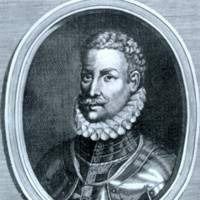
No se sabe a ciencia cierta donde nació Aldana, creyendo Rodríguez Moñino que era natural de Alcántara, como su padre, el ilustre capitán de los Tercios Bernardo de Aldana, si bien la mayoría de los estudiosos consideran que nació en Nápoles, probablemente en 1537. Era hijo del capitán de la guarnición militar destacada allí. Su juventud la pasó en Florencia, entregado al estudio de las lenguas clásicas y de los autores de la antigüedad, de los que llegó a ser un buen conocedor; además llegó a dominar incluso una docena de lenguas. Como poeta, es uno de los representantes del neoplatonismo en la poesía española. Como poeta fue tan alabado en su época que fue llamado el Divino por el mismo Miguel de Cervantes Saavedra, quien lo nombra en su obra de la Galatea y "símbolo del Renacimiento" por los creadores del Diccionario de Autoridades, quienes lo hicieron figurar entre la Autoridades de la Lengua. Como su padre y su hermano se consagró a la carrera militar, que no tardó pronto en detestar ansiando la vida contemplativa, y combatió como capitán en San Quintín, donde tuvo una actuación destacada, tanto que el rey Carlos I de España lo mencionaría por su valor; y, ya general de Artillería, fue enviado a Flandes en 1572 bajo el mando de don Fadrique Álvarez de Toledo y Enríquez, hermano del duque de Alba; durante el sitio de Harlem, donde fue herido por un mosquetazo en un pie. Residió en la corte de los Médicis en Florencia, donde concluyó su formación. De vuelta en España, fue alcalde del castillo de San Sebastián y un gran consejero y amigo del rey, Felipe II de España. Puesto por el rey al servicio del rey de Portugal Don Sebastián, sobrino de Felipe II, el rey lo apreció tanto que le regaló un collar de oro por valor de mil ducados. Francisco de Aldana, junto a Diego de Torres, fue el encargado de llevar a cabo la exploración del territorio marroquí, disfrazado de judío, labor que hizo en dos meses. Francisco, conocedor de casi una docena de lenguas, no tuvo problemas para desempeñar esta difícil misión. Murió el 4 de agosto de 1577 luchando contra los musulmanes en la batalla de Alcazarquivir, como general de la infantería de la expedición de Don Sebastián, aunque había desaconsejado esa empresa y estaba a disgusto con la idea. Su hermano Cosme editó en dos partes (Milán, 1589; Madrid, 1591) lo que pudo hallar de su obra, en la que destacan en particular los sonetos donde revela su desengaño y disgusto por la vida militar que llevaba y expresa su deseo de retirarse para llevar una vida contemplativa en soledad y en contacto con la naturaleza. También son importantes una Fábula de Faetonte en endecasílabos blancos, la muy original Canción a Cristo crucificado y la extraordinaria Epístola a Arias Montano sobre la contemplación de Dios y los requisitos della (1577), en tercetos encadenados, de inspiración neoplatónica, que ha pasado a todas las antologías de poesía en castellano como obra clásica por contenido y estilo: Pienso torcer de la común carrera que sigue el vulgo y caminar derecho jornada de mi patria verdadera; entrarme en el secreto de mi pecho y platicar en él mi interior hombre, dó va, dó está, si vive, o qué se ha hecho. Y porque vano error más no me asombre, en algún alto y solitario nido pienso enterrar mi ser, mi vida y nombre y, como si no hubiera acá nacido, estarme allá, cual Eco, replicando al dulce son de Dios, del alma oído. Admirado por Francisco de Quevedo, que intentó editar sus obras en el siglo XVII para combatir el lenguaje culterano, y por Cervantes, quien lo pone junto a Boscán y Garcilaso, fue reverenciado por poetas de la Generación del 27 como Luis Cernuda. Sonetos * Al cielo * Alma Venus gentil, que al tierno arquero * ¿Cuál es la causa, mi Damón, que estando * Cuál nunca osó mortal tan alto el vuelo * El ímpetu cruel de mi destino * Es tanto el bien que derramó en mi seno * Galanio, tú sabrás que esotro día * Hase movido, dama, una pasión * Mil veces callo que romper deseo * Mil veces digo, entre los brazos puesto * Otro aquí no se ve que, frente a frente * Por un bofetón dado a una dama * Reconocimiento de la vanidad del mundo Otros poemas * Carta para Arias Montano (también conocida como Epístola a Arias Montano) * Pocos tercetos escritos a un amigo Referencias Wikipedia - http://es.wikipedia.org/wiki/Francisco_de_Aldana
My name is Adrian. I grew up in the Sierra Nevada's of California. I'm in my early 30s and still living the solo, single life. I'm a creative individual who expresses himself through writing, photography, and making short videos. Most of my writings have a Love or Life touch, but I consider my work to be a variety of different elements. I have been writing poems and short stories since High School and some through my college years. Since I'm one of the single men with no children at his side, My writing centers around what comes in my mind and the many things any single, loving individual would wish to have. Some of my writings can be light or dark, happy or sad, It depends on what my creative mood is. Many people inside my circle know very little of my writing, but know me for my contributions in photography and creative video ambitions. I chose to separate the writer and the creative photographer, because it would draw too much attention. If you have any questions or want to share writings, feel free.
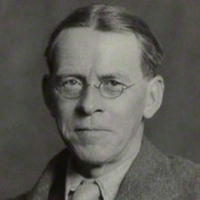
Lascelles Abercrombie (also known as the Georgian Laureate, linking him with the “Georgian poets”; 9 January 1881– 27 October 1938) was a British poet and literary critic, one of the “Dymock poets”. Biography He was born in Ashton upon Mersey, Sale, Cheshire and educated at Malvern College, and at Owens College. Before the First World War, he lived for a time at Dymock in Gloucestershire, part of a community that included Rupert Brooke and Robert Frost. Edward Thomas visited. During these early years, he worked as a journalist, and he started his poetry writing. His first book, Interludes and Poems (1908), was followed by Mary and the Bramble (1910) and the poem Deborah, and later by Emblems of Love (1912) and Speculative Dialogues (1913). His critical works include An Essay Towards a Theory of Art (1922), and Poetry, Its Music and Meaning (1932). Collected Poems (1930) was followed by The Sale of St. Thomas (1931), a poetic drama. During World War I, he served as a munitions examiner, after which, he was appointed to the first lectureship in poetry at the University of Liverpool. In 1922 he was appointed Professor of English at the University of Leeds in preference to J. R. R. Tolkien, with whom he shared, as author of The Epic (1914), a professional interest in heroic poetry. In 1929 he moved on to the University of London, and in 1935 to the prestigious Goldsmiths’ Readership at Oxford University, where he was elected as a Fellow of Merton College. He wrote a series of works on the nature of poetry, including The Idea of Great Poetry (1925) and Romanticism (1926). He published several volumes of original verse, largely metaphysical poems in dramatic form, and a number of verse plays. Abercrombie also contributed to Georgian Poetry and several of his verse plays appeared in New Numbers (1914). His poems and plays were collected in 'Poems’ (1930). Lascelles Abercrombie died in London in 1938, aged 57, from undisclosed causes. Family He was the brother of the architect and noted town planner, Patrick Abercrombie. In 1909 he married Catherine Gwatkin (1881–1968) of Grange-over-Sands. They had 4 children, a daughter and three sons. Two of the sons achieved prominence as a phonetician David Abercrombie and a cell biologist Michael Abercrombie. A grandson, Jeffrey Cooper, produced an admirable bibliography of his grandfather, with brief but important notes, while a great-grandson is author Joe Abercrombie. Archives A collection of literary and other manuscripts relating to Abercrombie is held by Special Collections in the Brotherton Library at the University of Leeds. The collection contains drafts of many of Abercrombie’s own publications and literary material; lecture notes, including those of his own lectures and some notes taken from the lectures of others, and a printed order of service for his Memorial Service in 1938. Special Collections in the Brotherton Library also holds correspondence relating to Lascelles Abercrombie and his family. Comprising 105 letters, the collection contains letters of condolence to Catherine and Ralph Abercrombie on the death of Lascelles, as well as Abercrombie family letters from various correspondents, chiefly to Ralph Abercrombie. Works * Interludes and Poems 1908 * Mary and the Bramble 1910 * Deborah * Emblems of Love 1912 * Speculative Dialogues 1913 * An Essay Towards a Theory of Art 1922 * Poetry, Its Music and Meaning 1932 * Collected Poems 1930 * The Sale of St. Thomas 1931 References Wikipedia—https://en.wikipedia.org/wiki/Lascelles_Abercrombie


